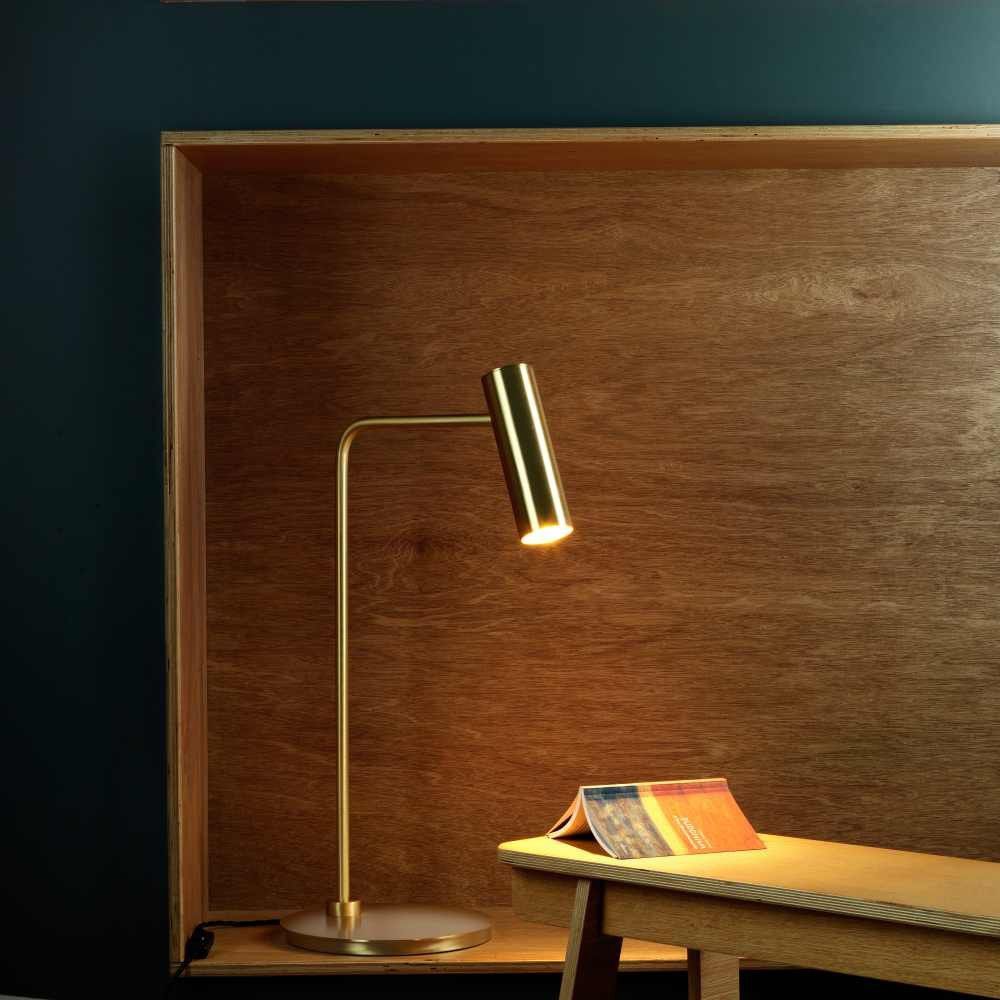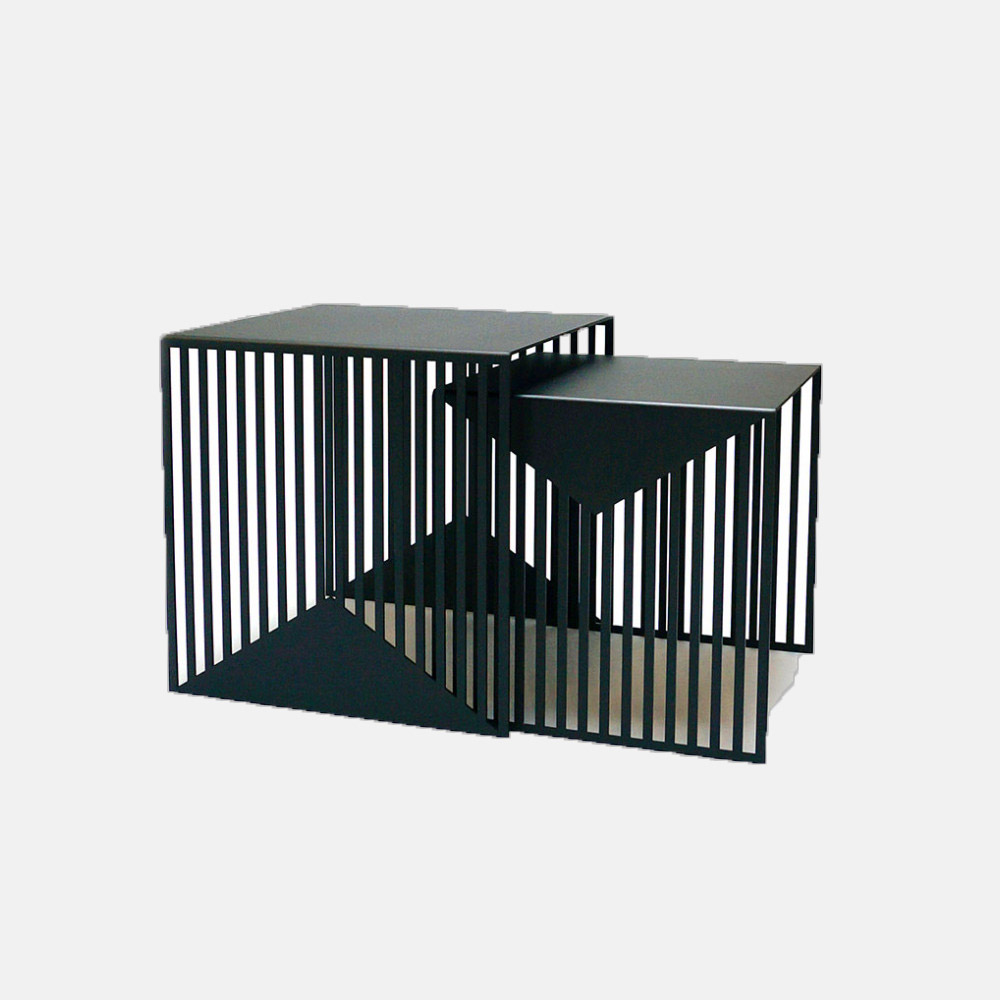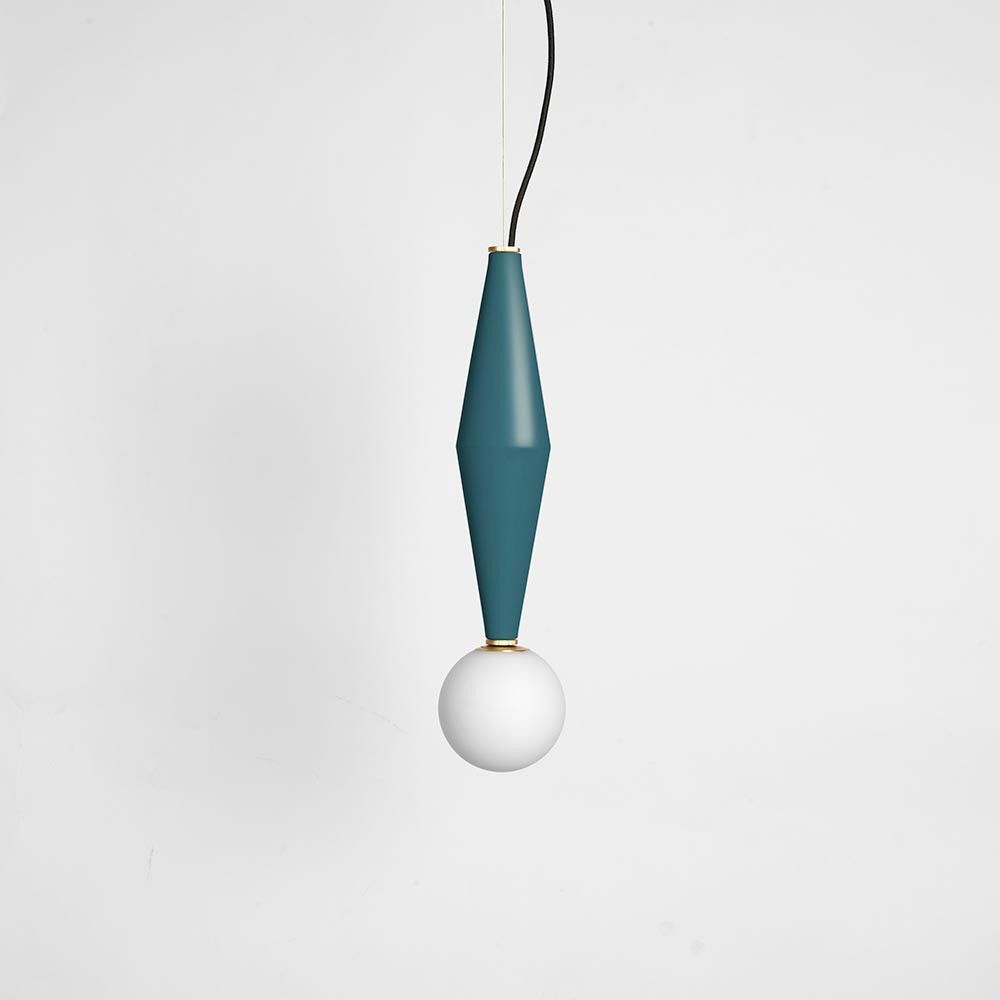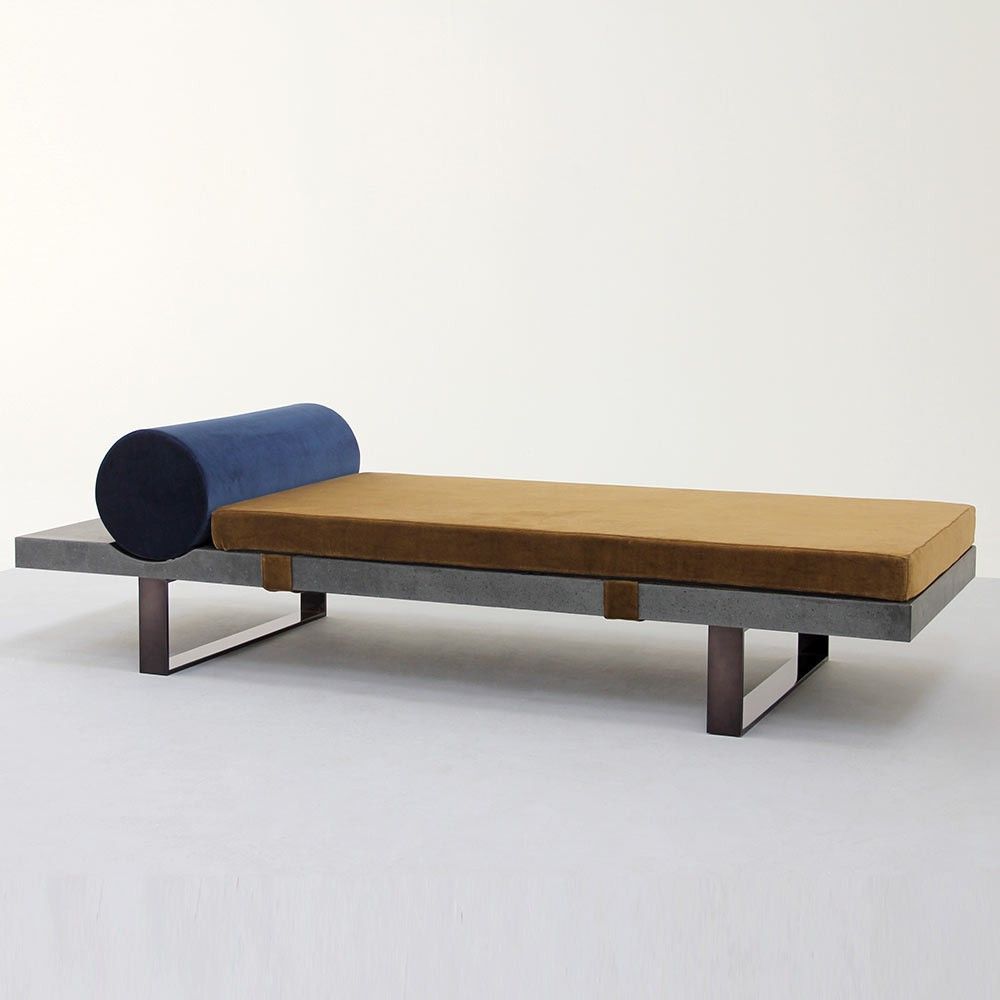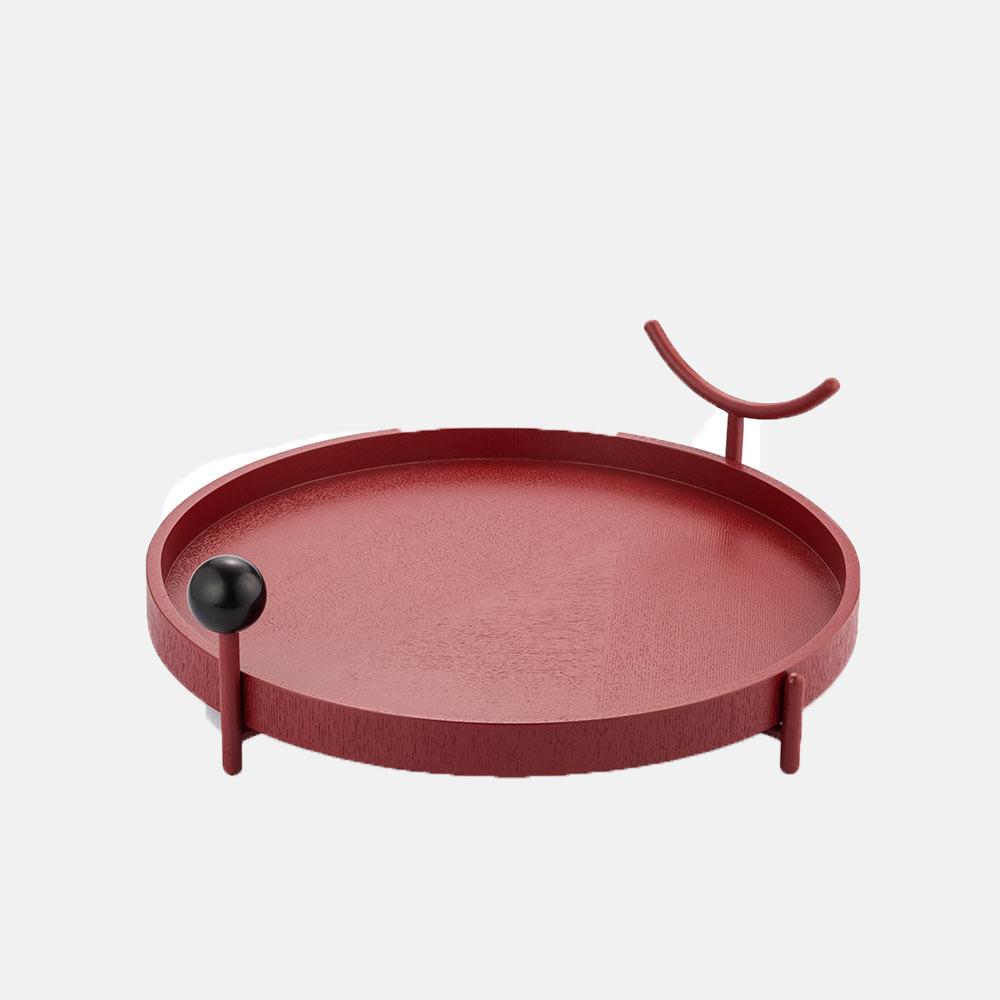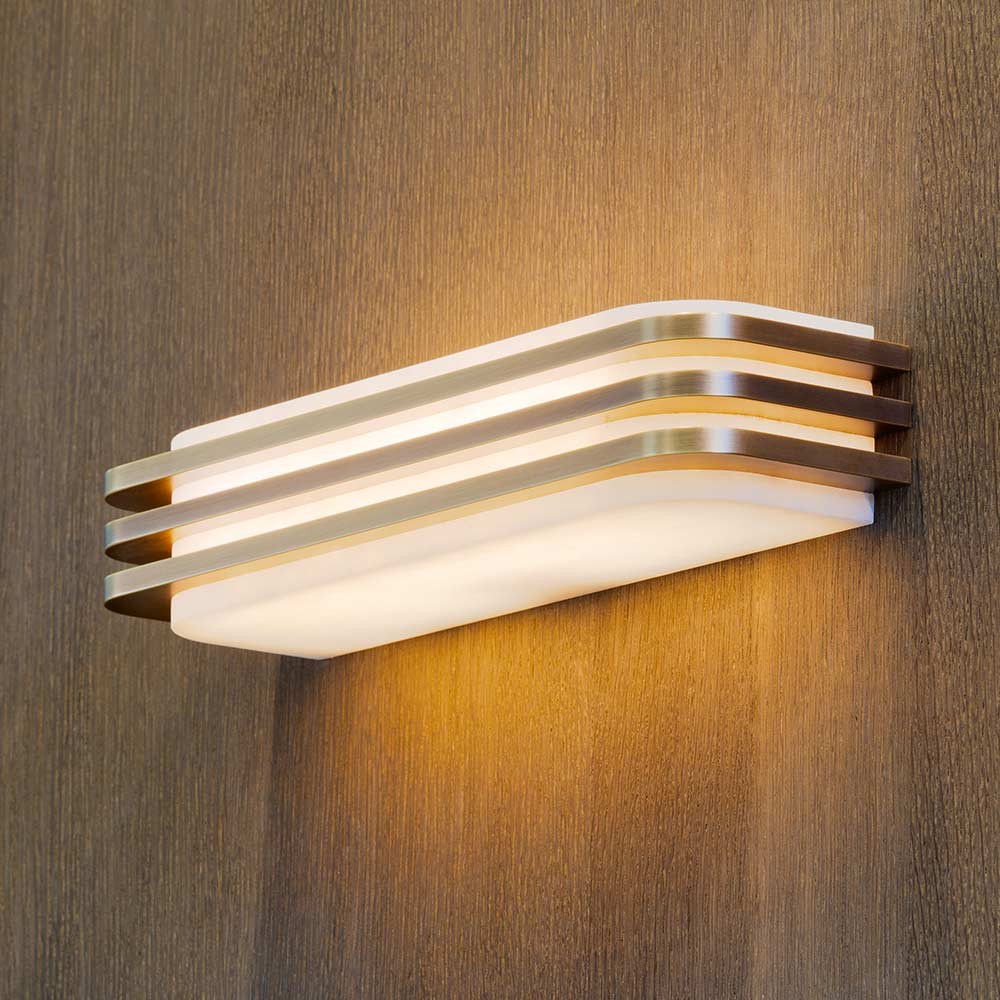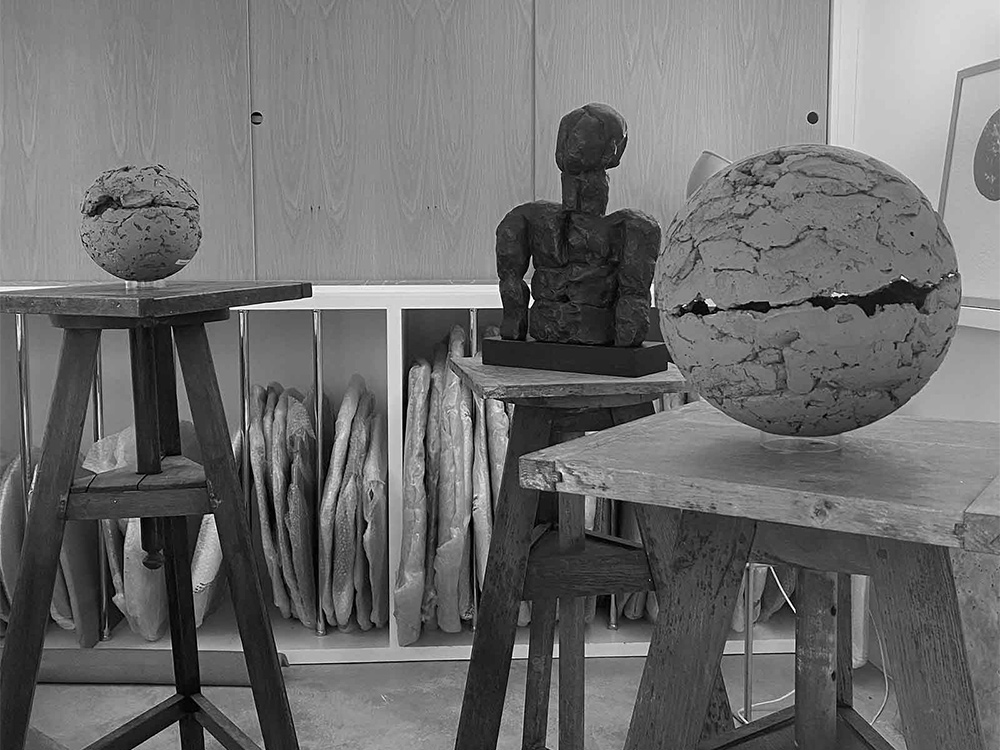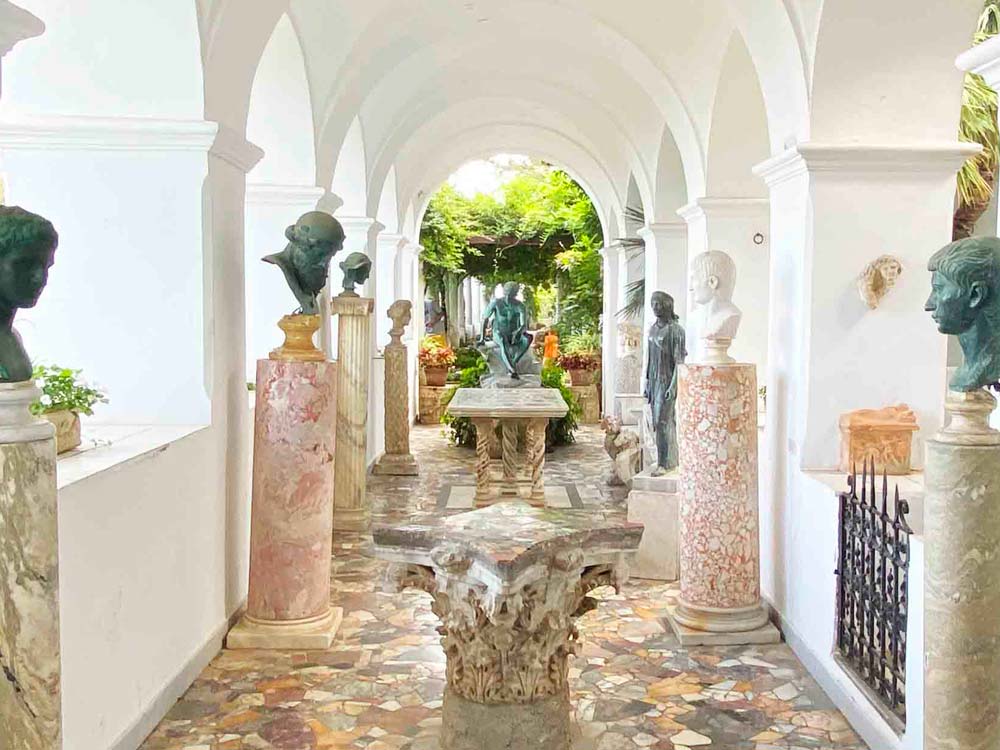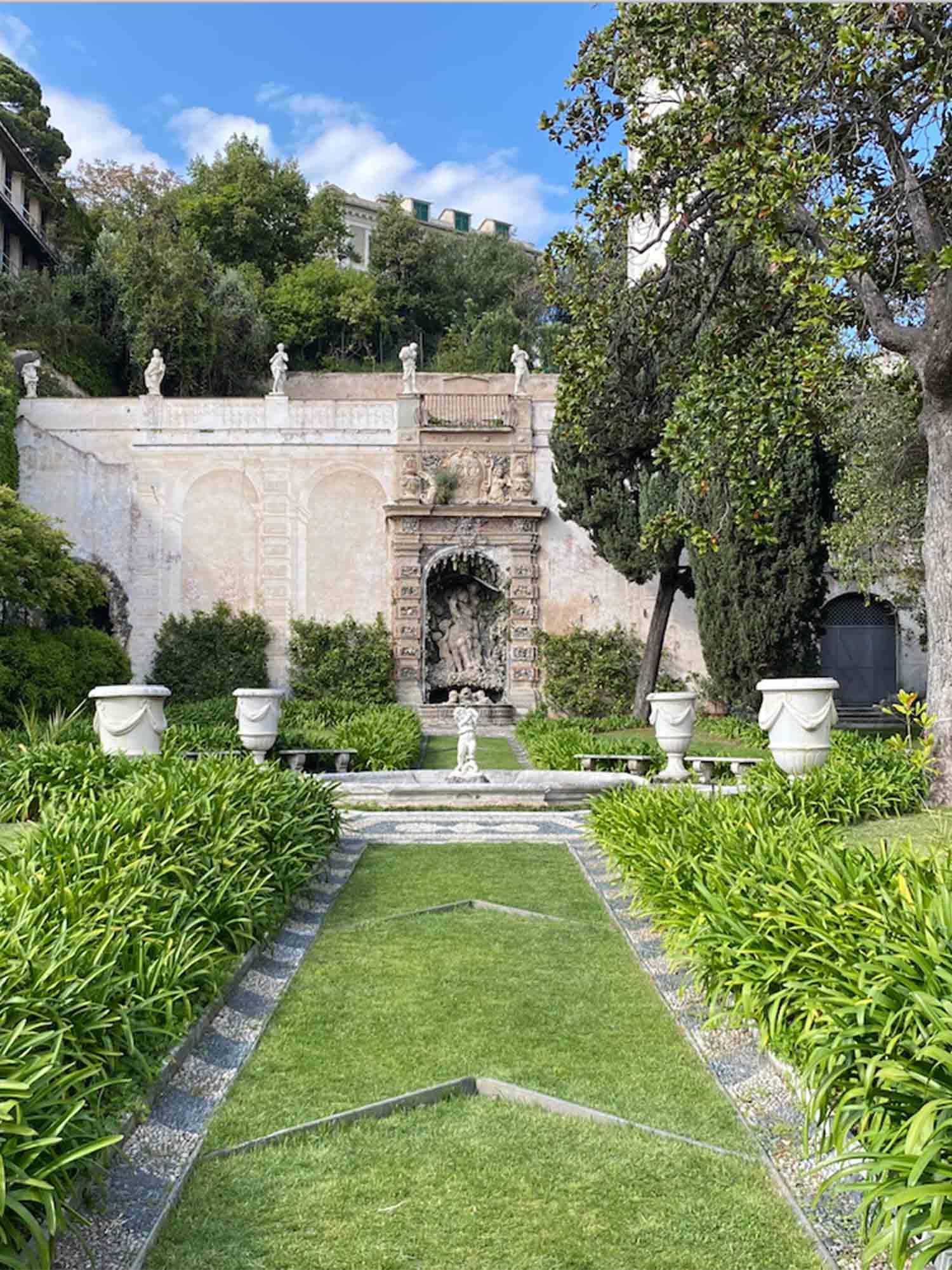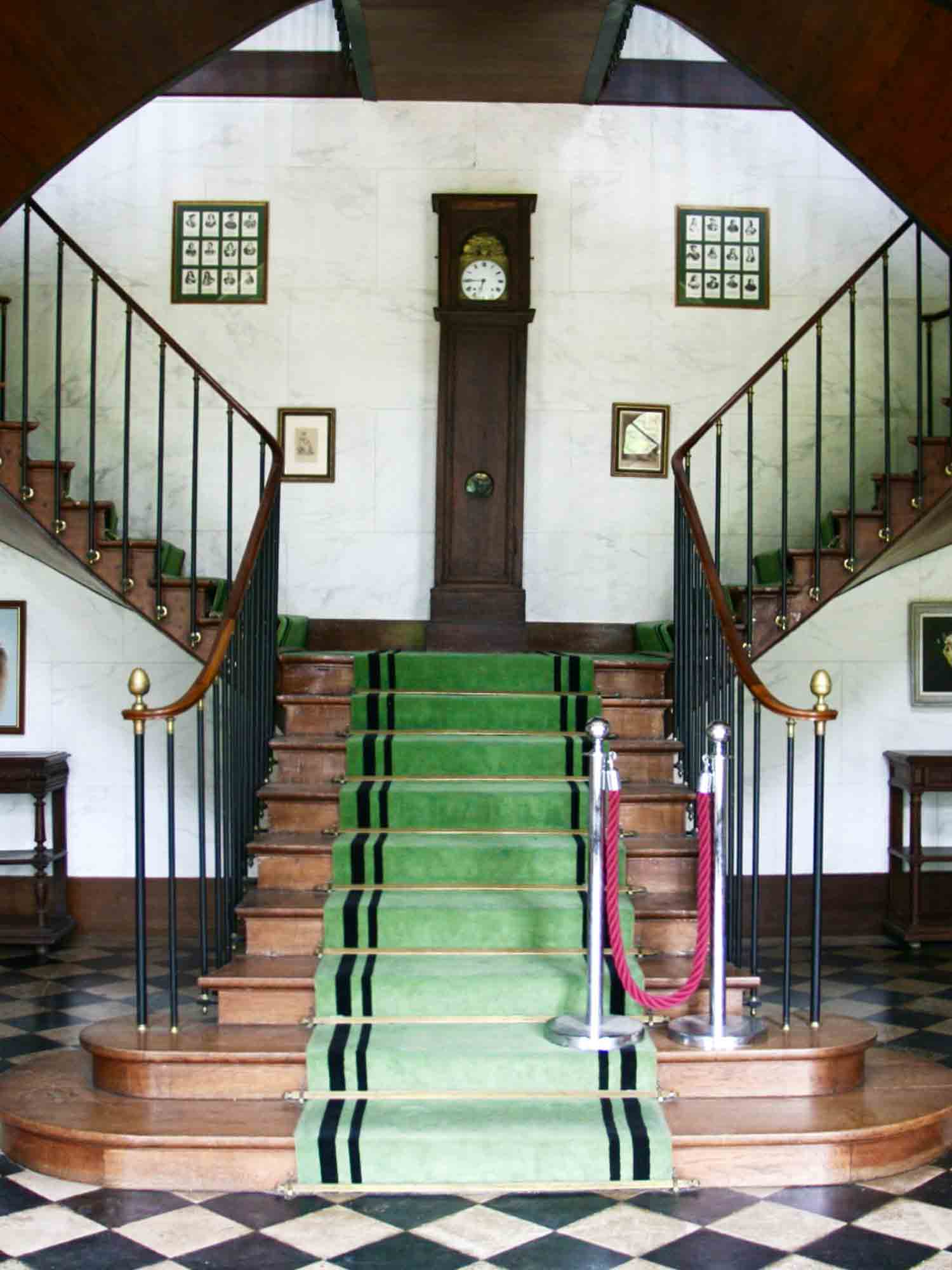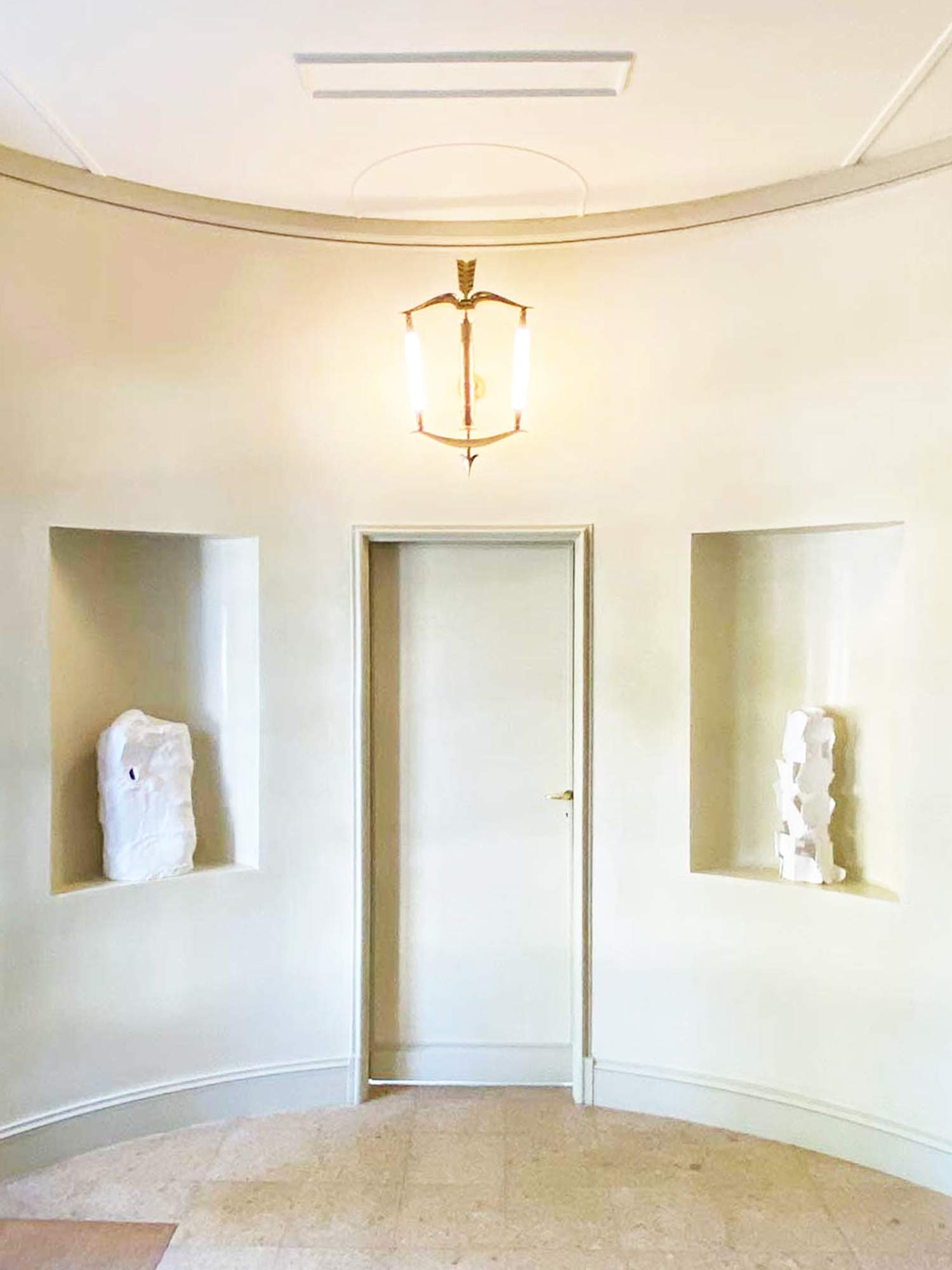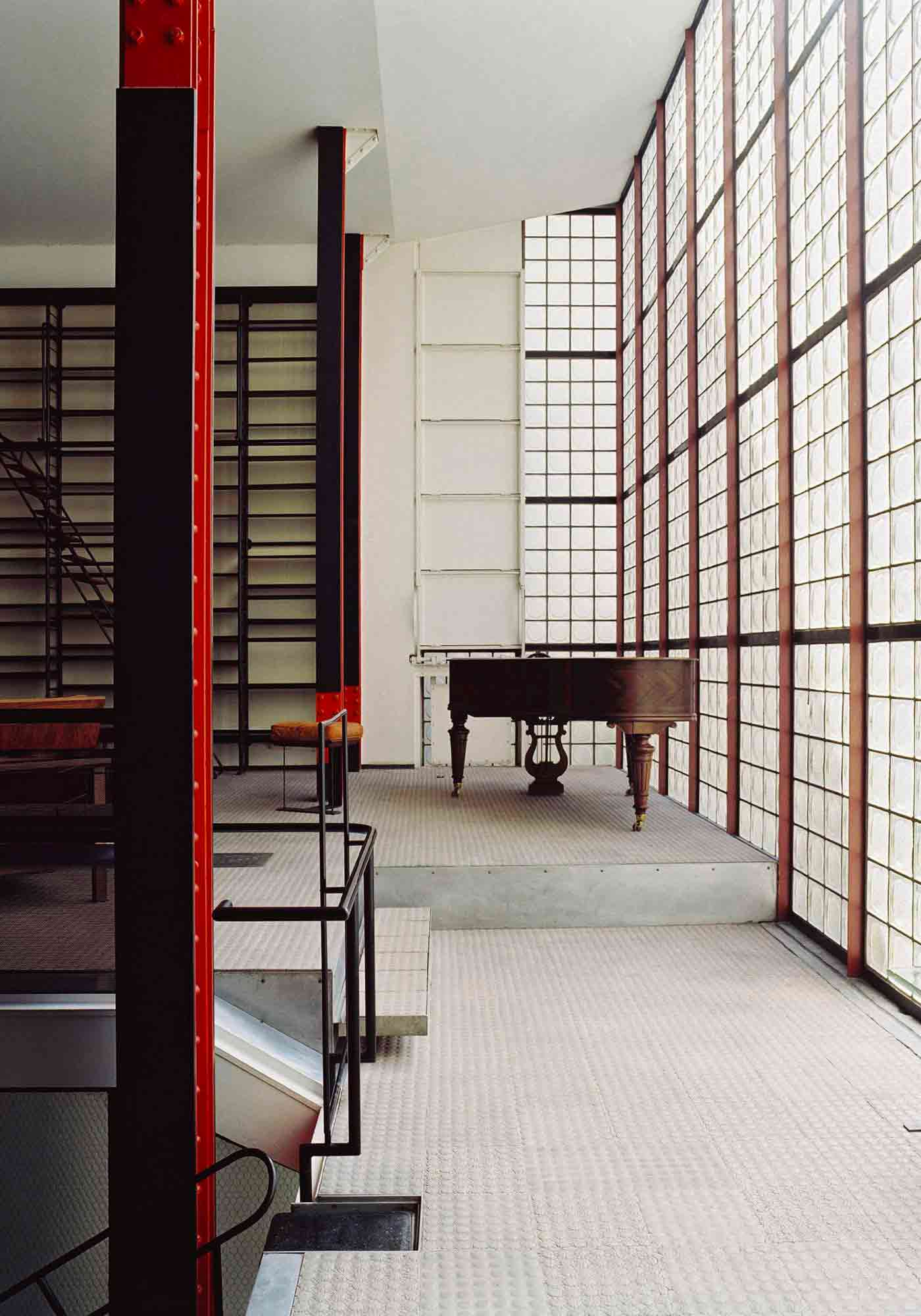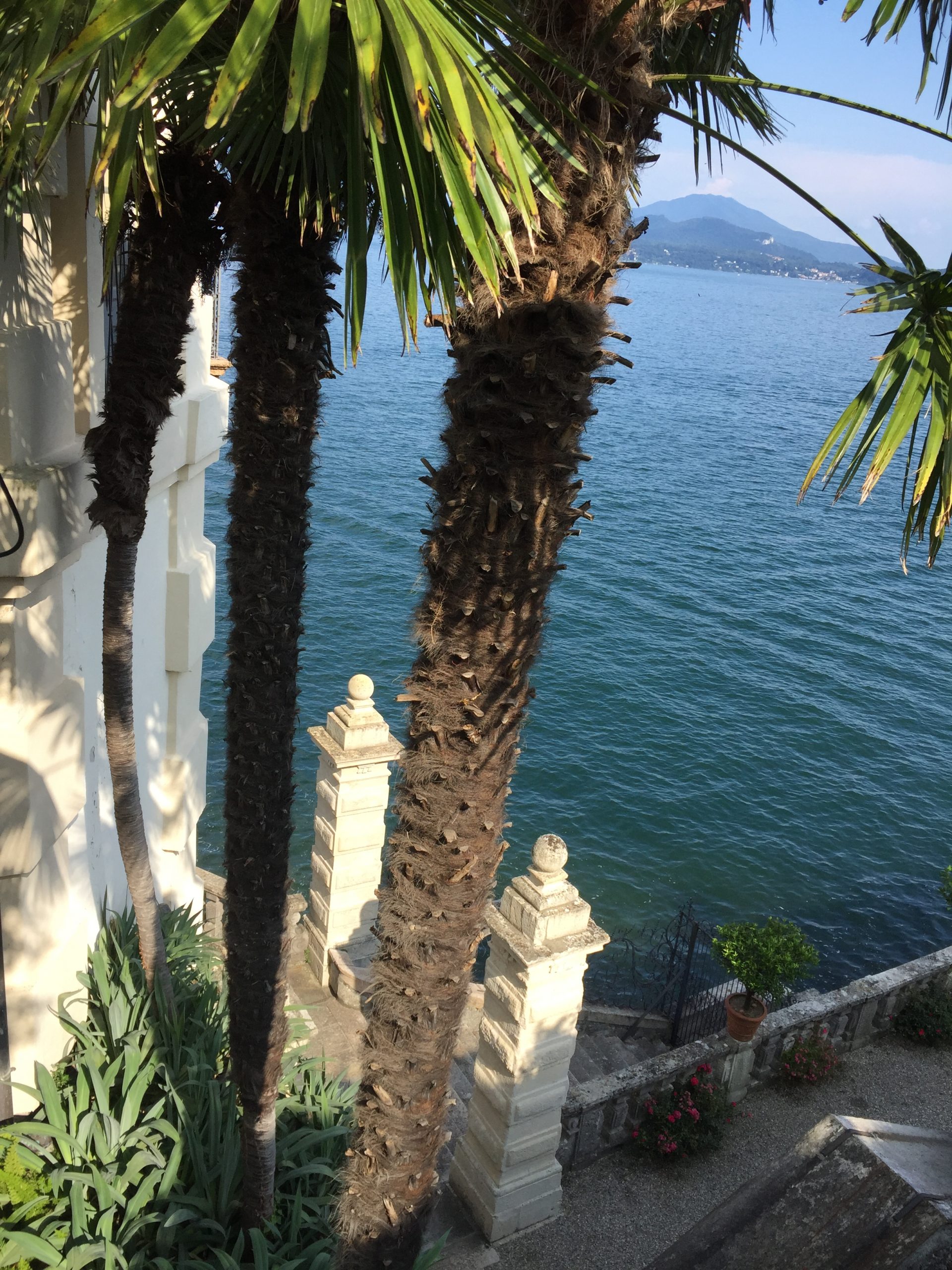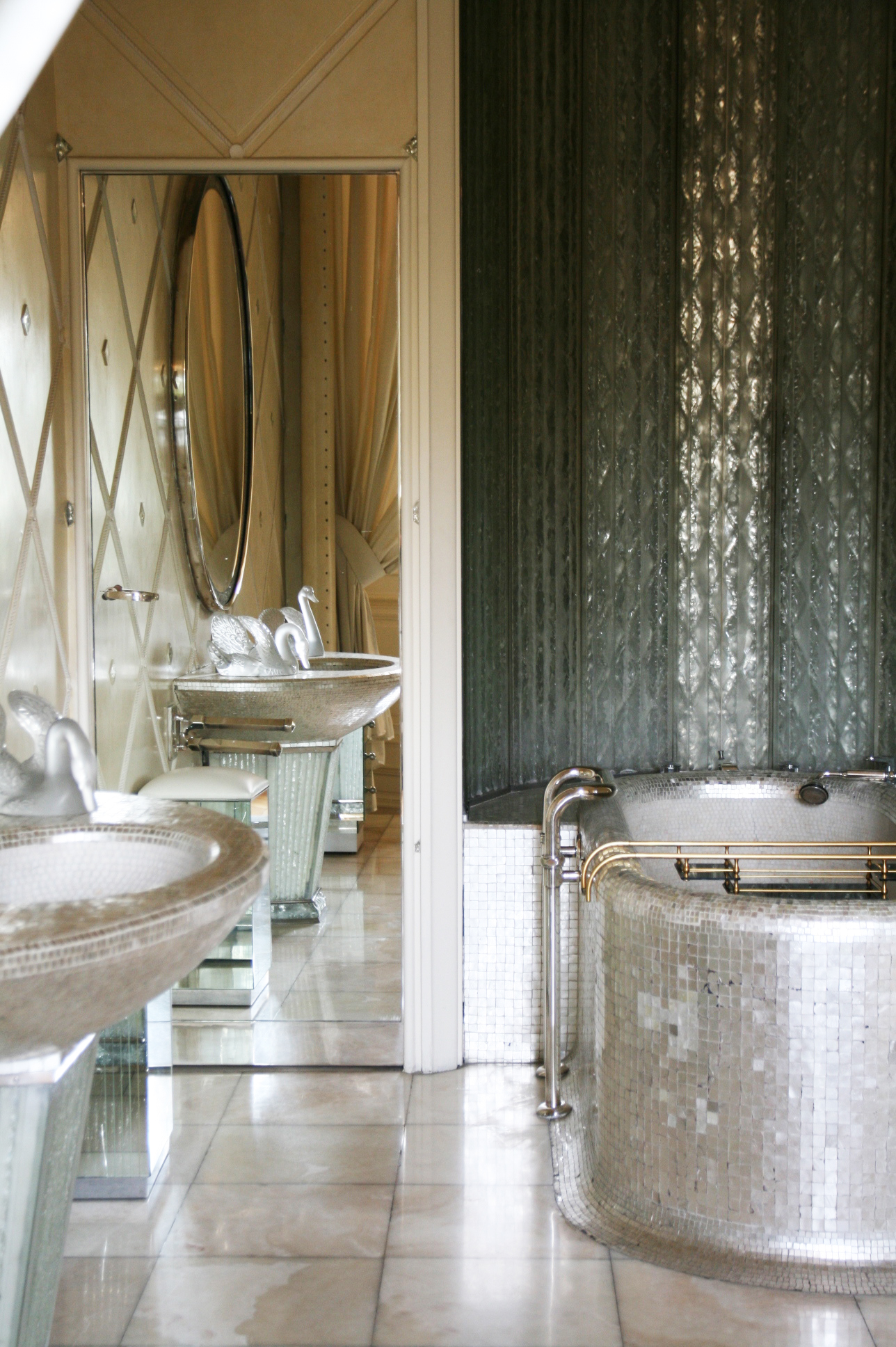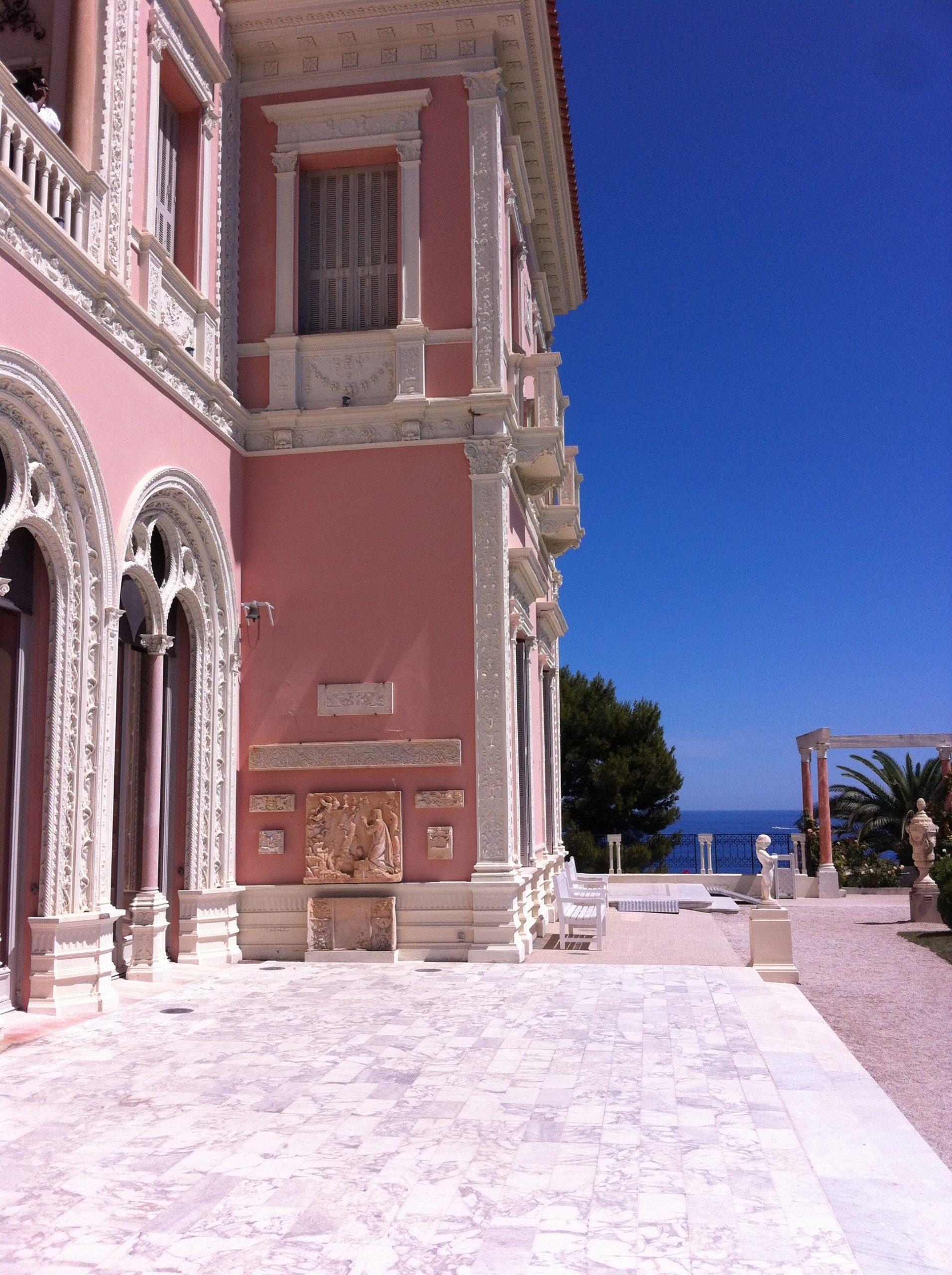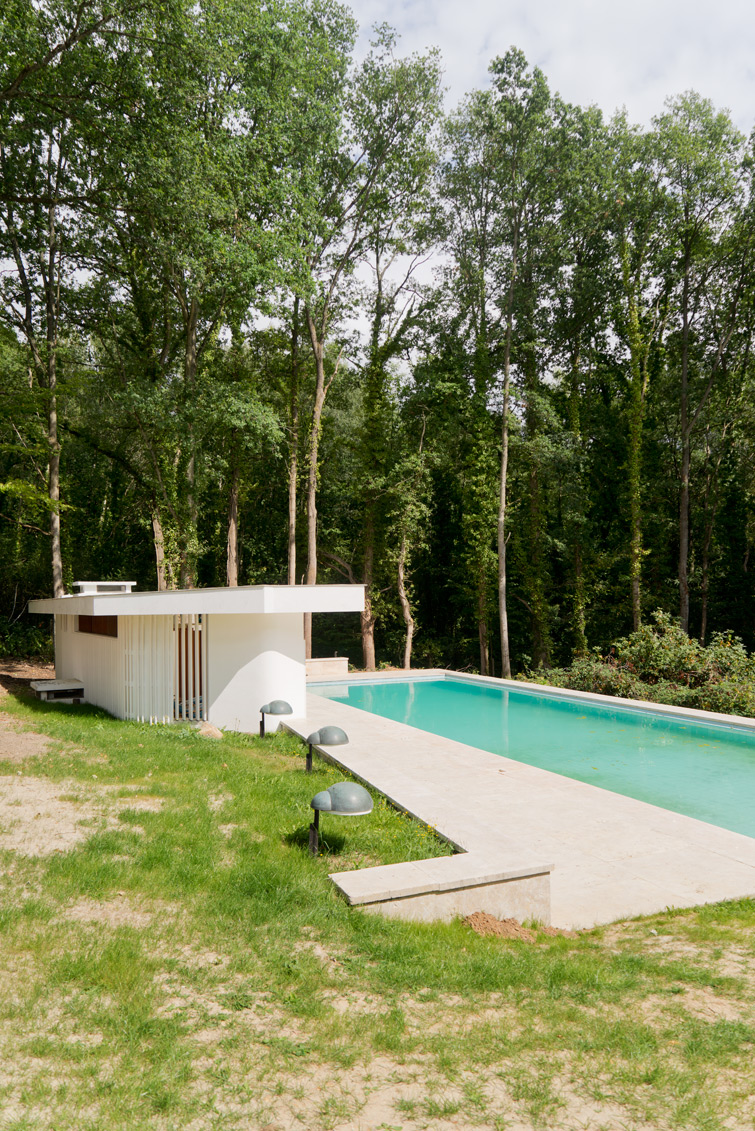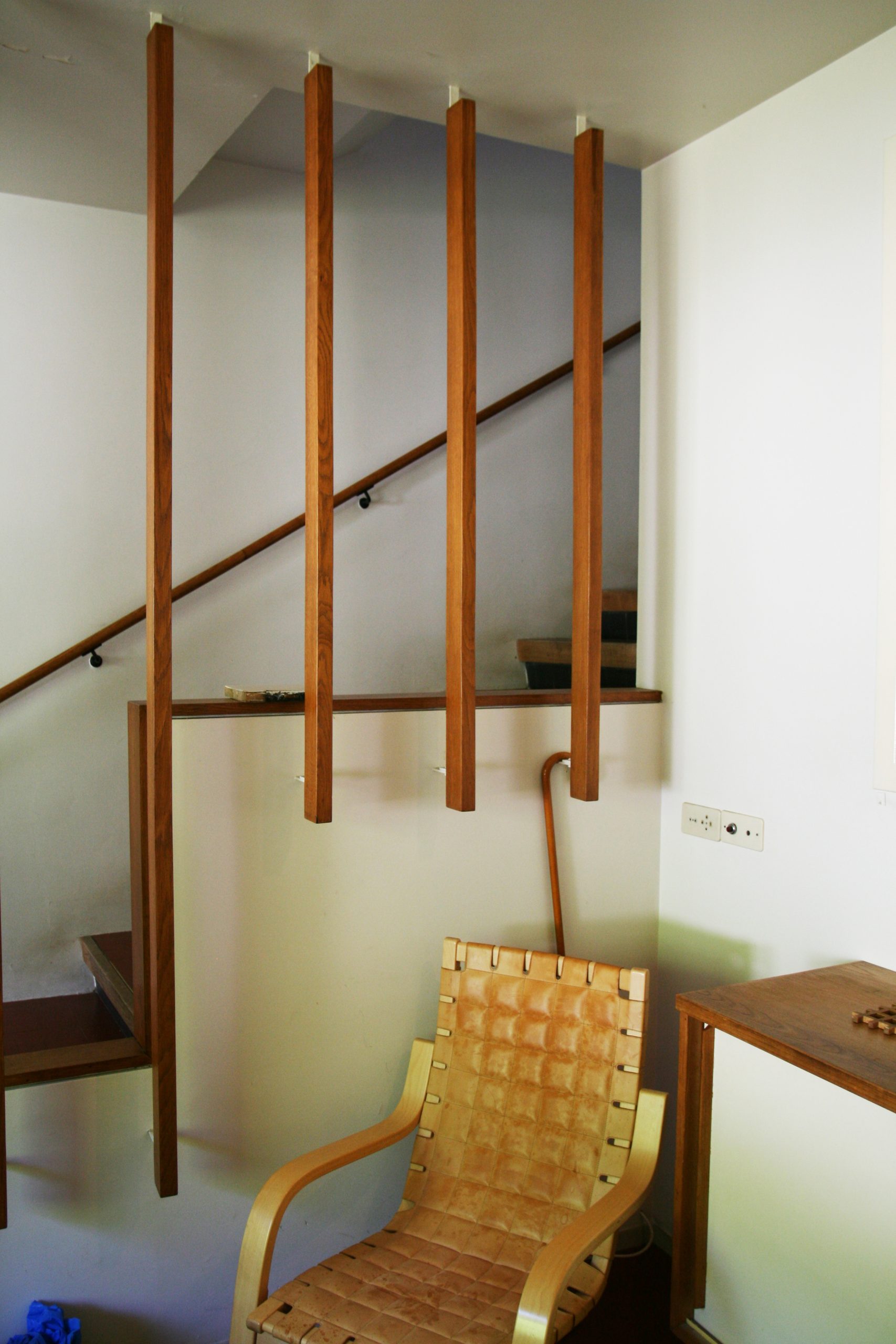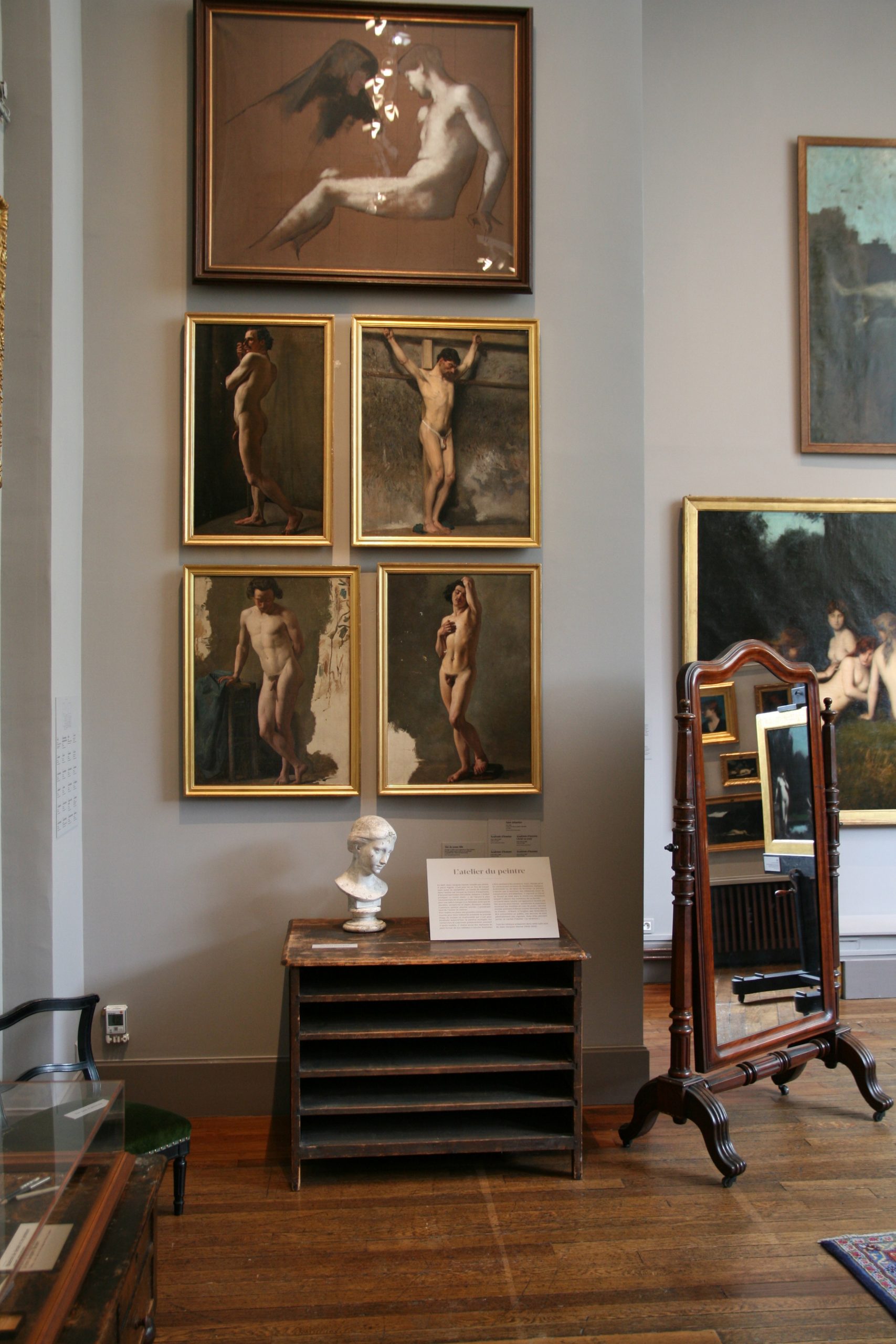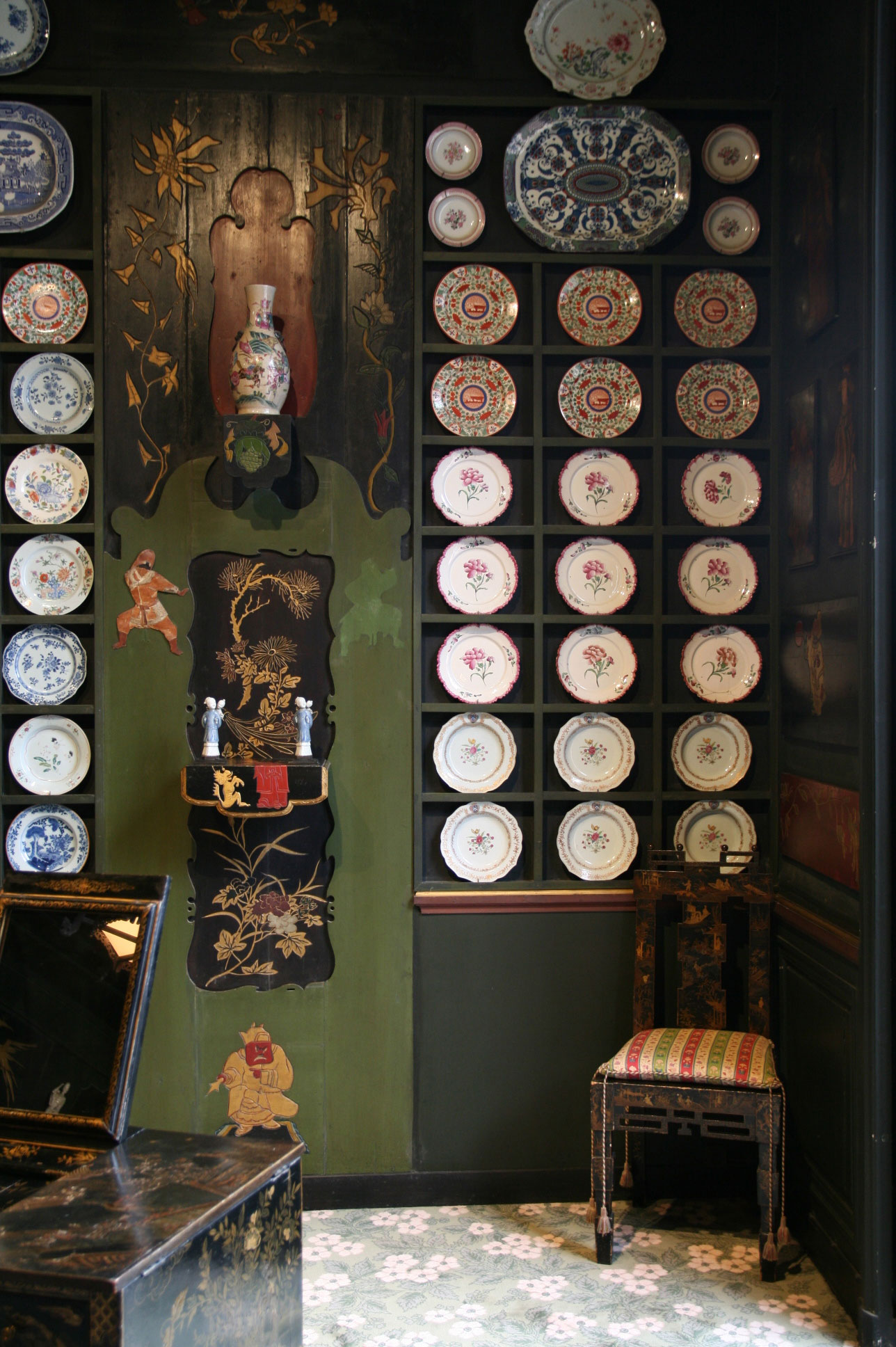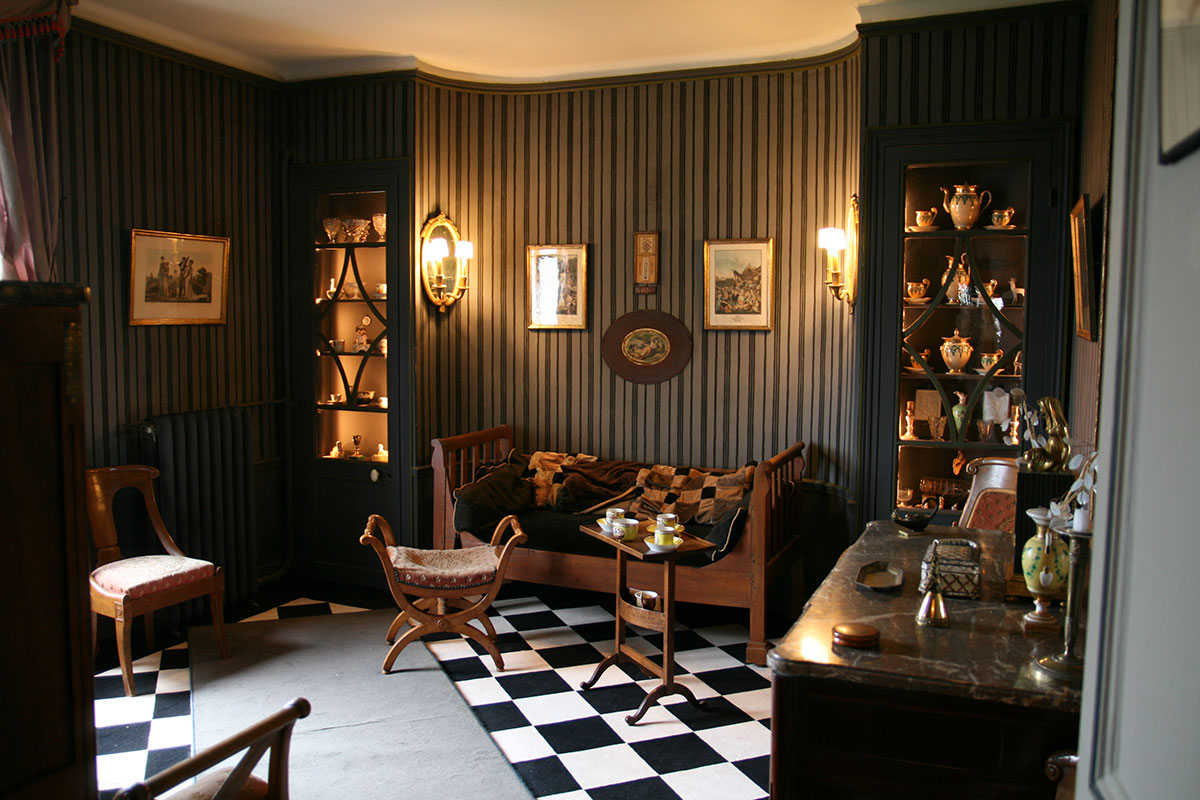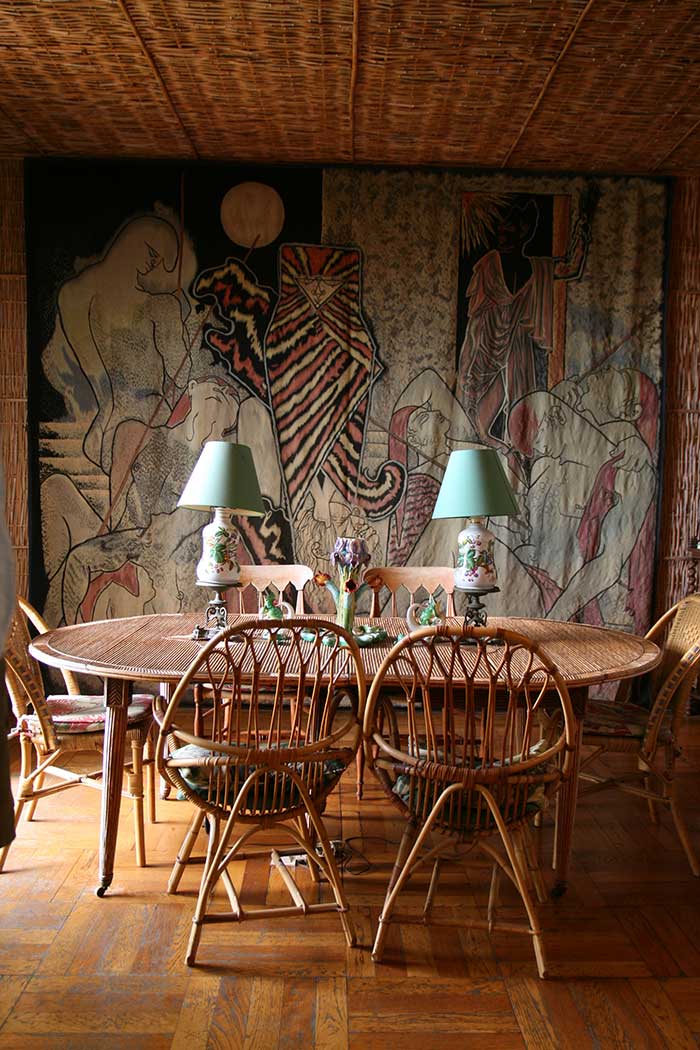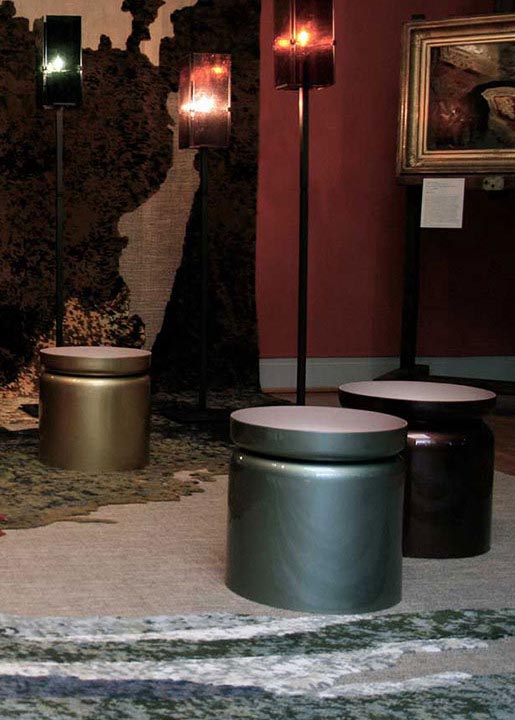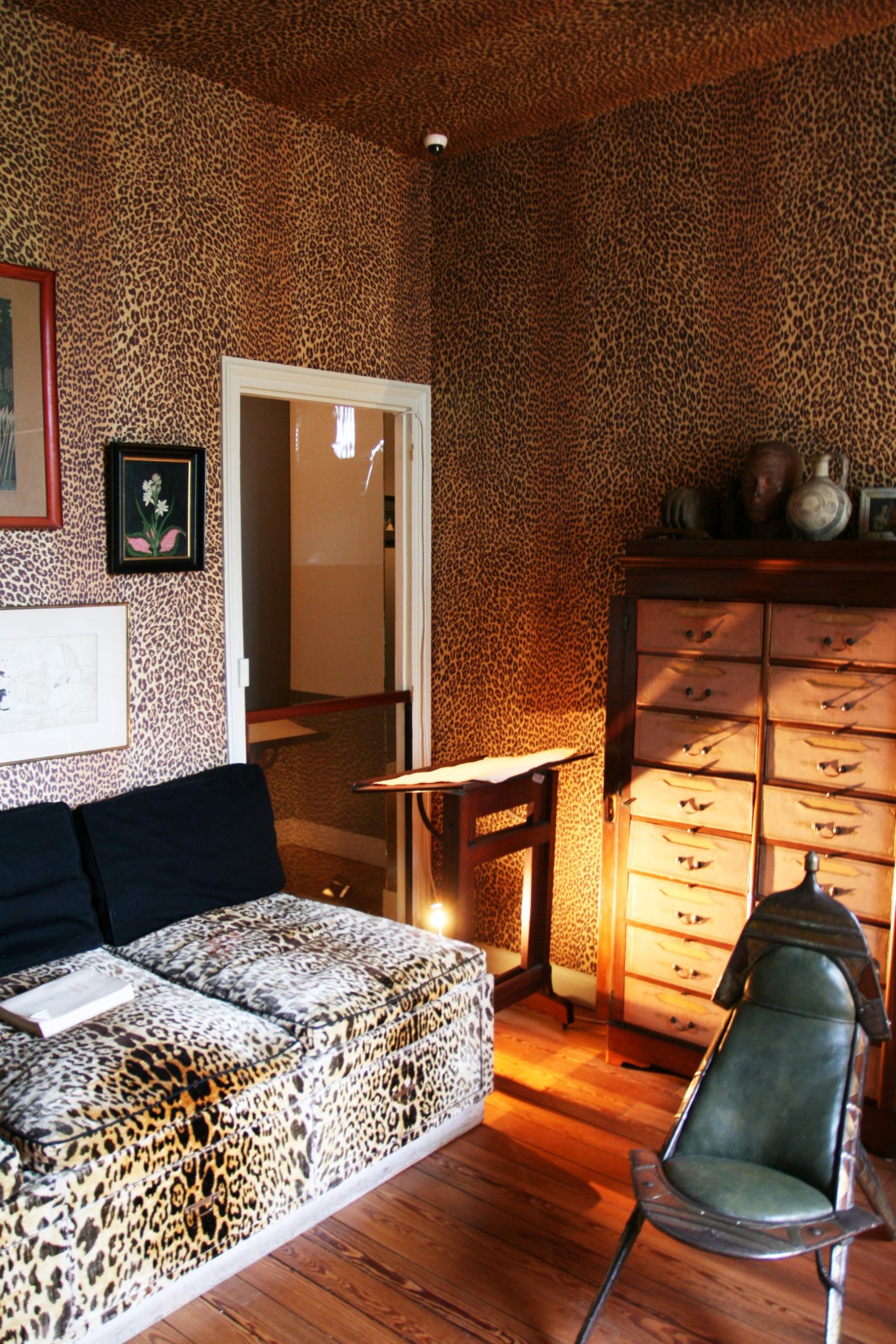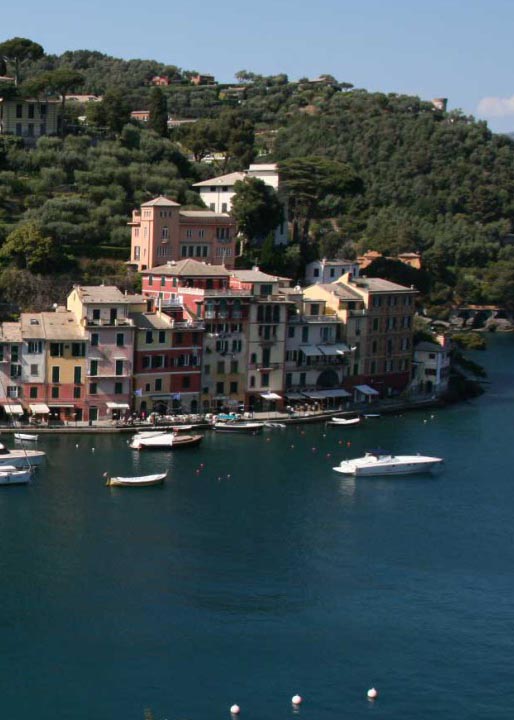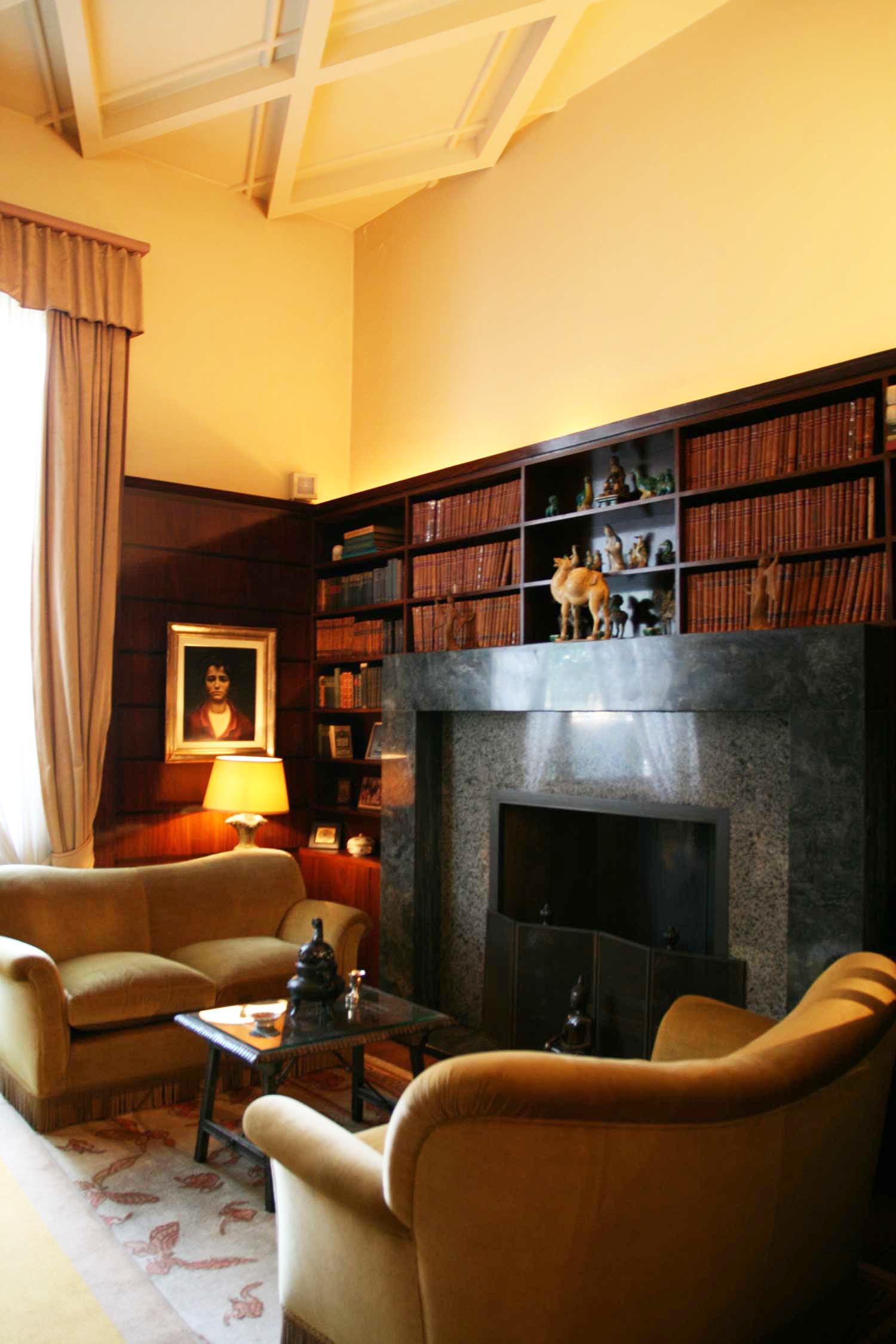
The Villa Cavrois
The Villa Cavrois was built for the industrialist Paul Cavrois (who made his fortune in the textile industry). The house, located in Croix, northern France, was designed by Robert Mallet-Stevens, to whom Paul Cavrois gave carte blanche. Mallet-Stevens designed both the building – inaugurated in 1932 after 3 years of work – the interiors and the gardens.
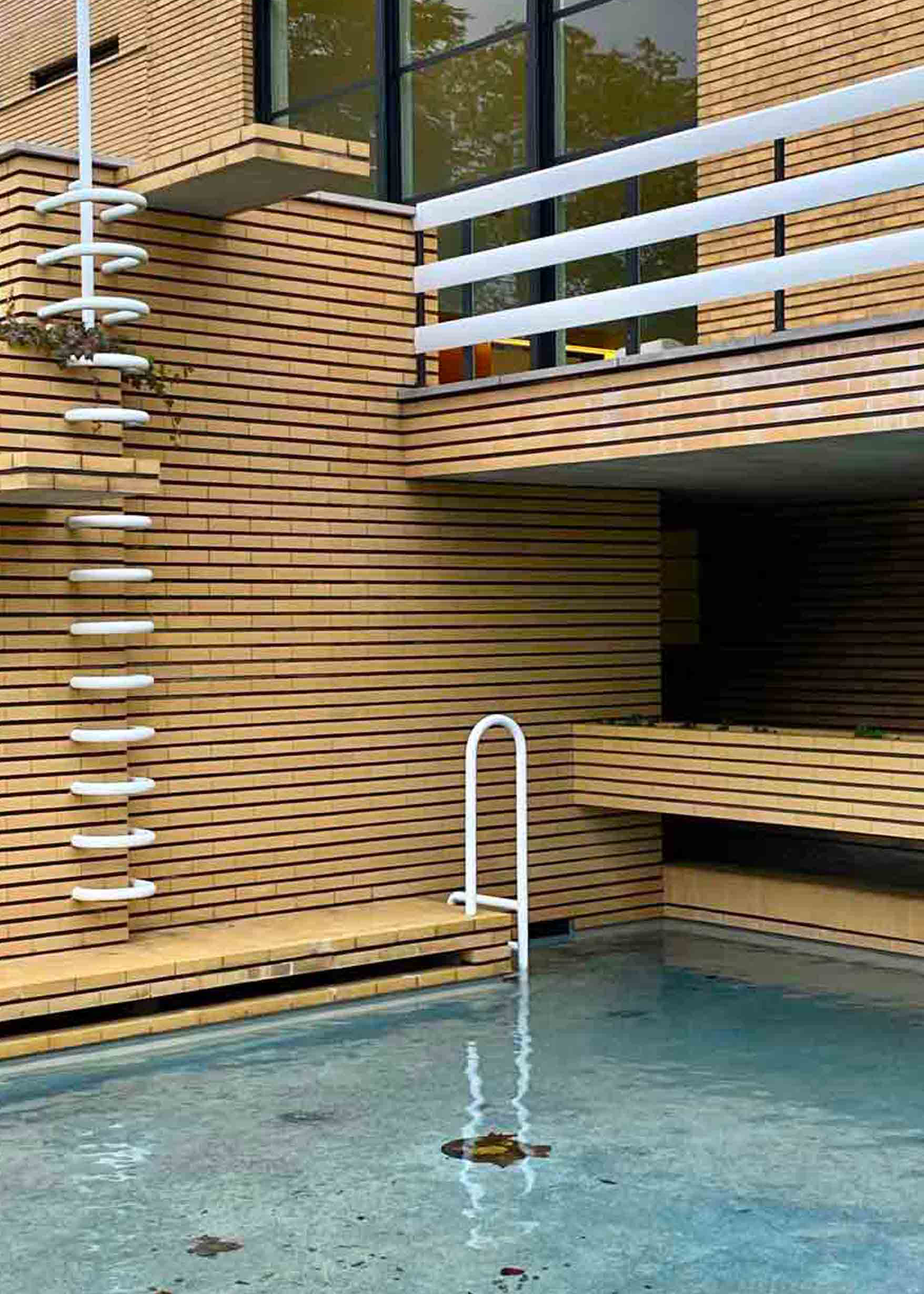
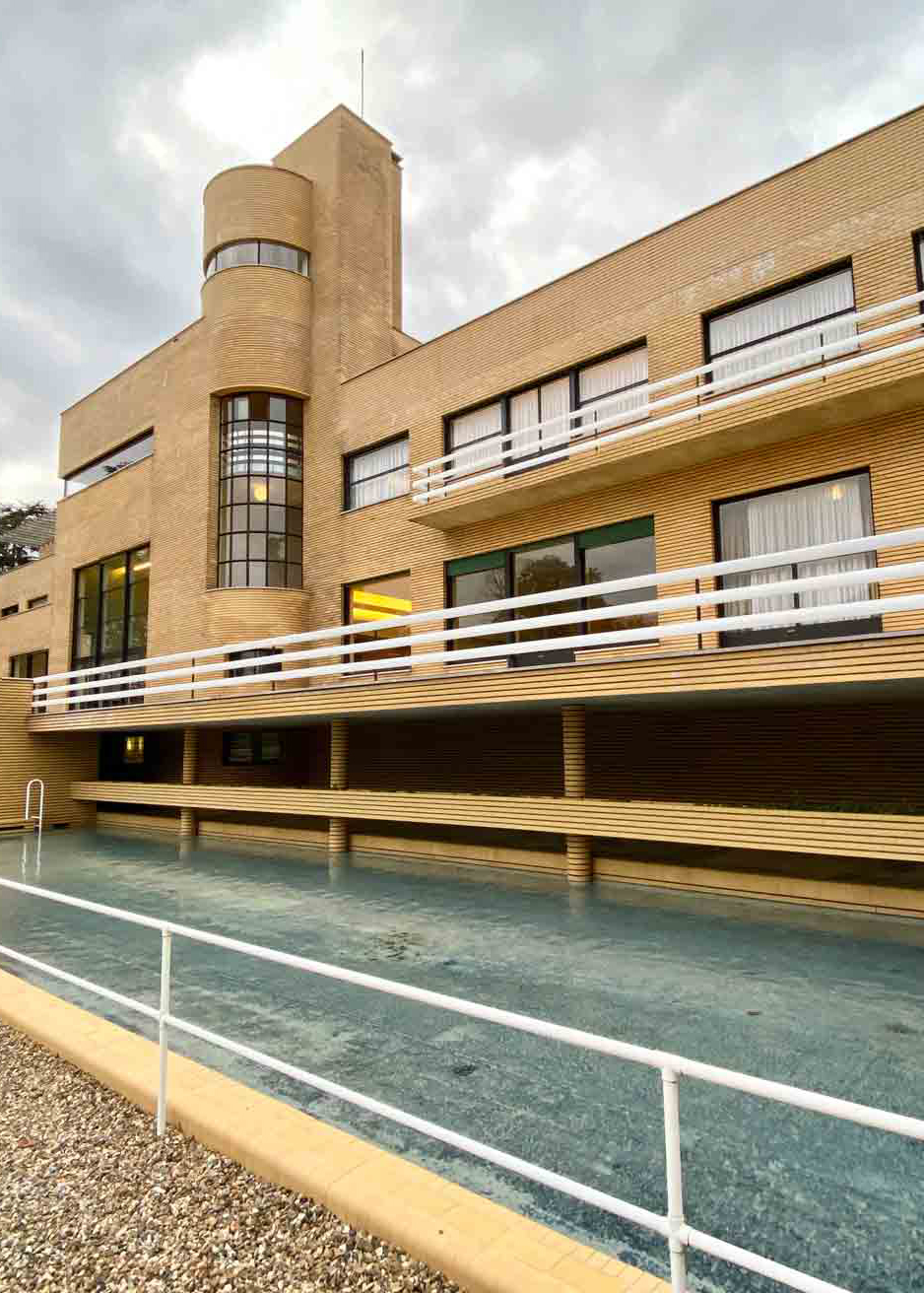
The exterior is clad in brick, a material widely used in the region. Mallet-Stevens used 26 different molds, to have bricks made to his exact dimensions and to ensure that not one single brick was cut.
Although the style of the villa is extremely modern with its yellow brick cladding on the exterior, clean lines and large glass surfaces, the plan of the villa corresponds to that of the traditional French chateau, with its entrance and large hall in the centre, serving two symmetrical wings: one the one side that of the parents and on the other, that of the children and the servants.
The Villa Cavrois – 60m long, featuring 1,840m2 of living space – was designed to impress, and to showcase a new way of life privileging light, space, comfort and healthy living.
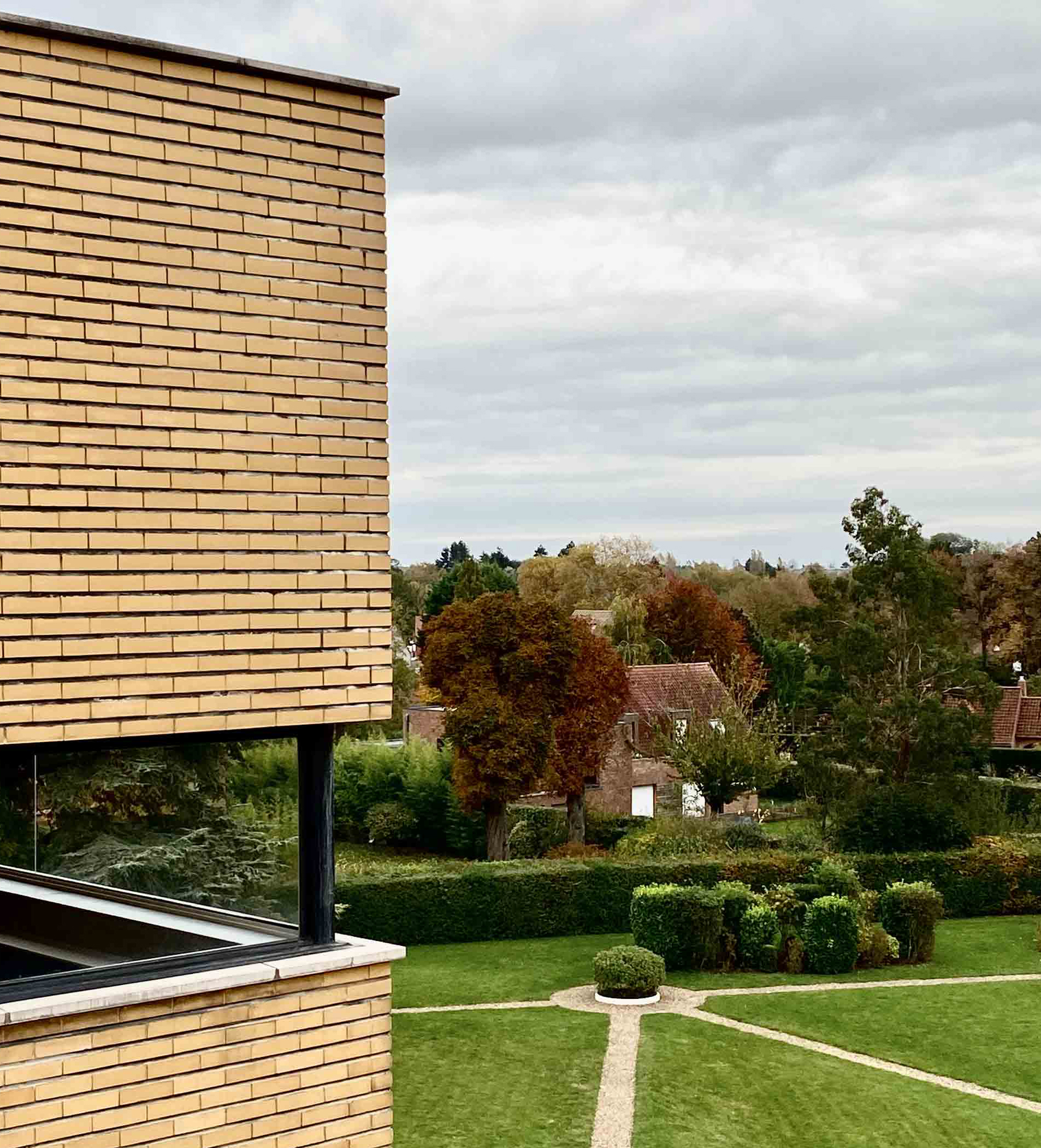
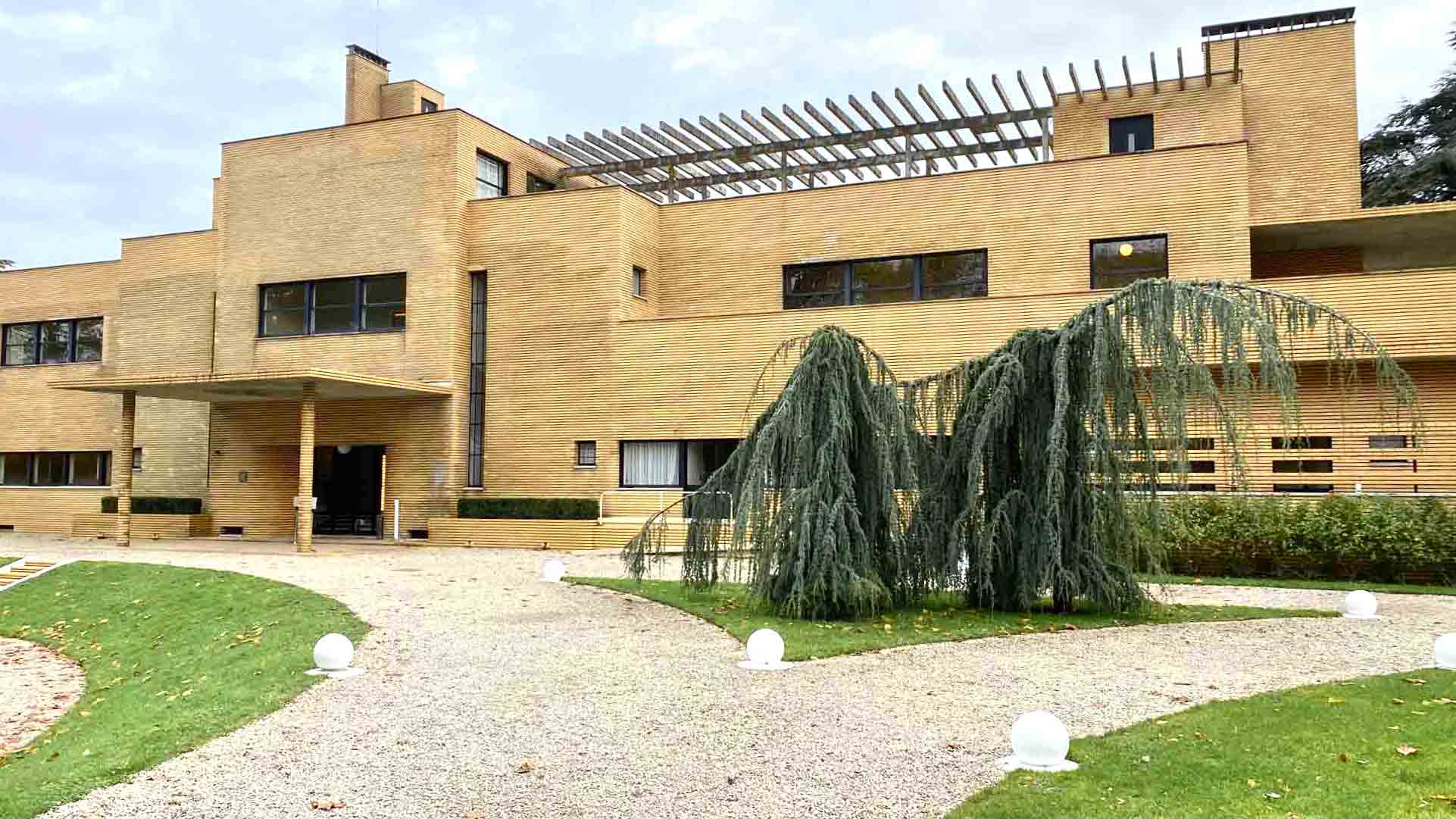

The house was equipped with hot and electricity, equipment that was relatively rare in the 1930s. There was a telephone in every room, a modern boiler room, and a wine cellar.
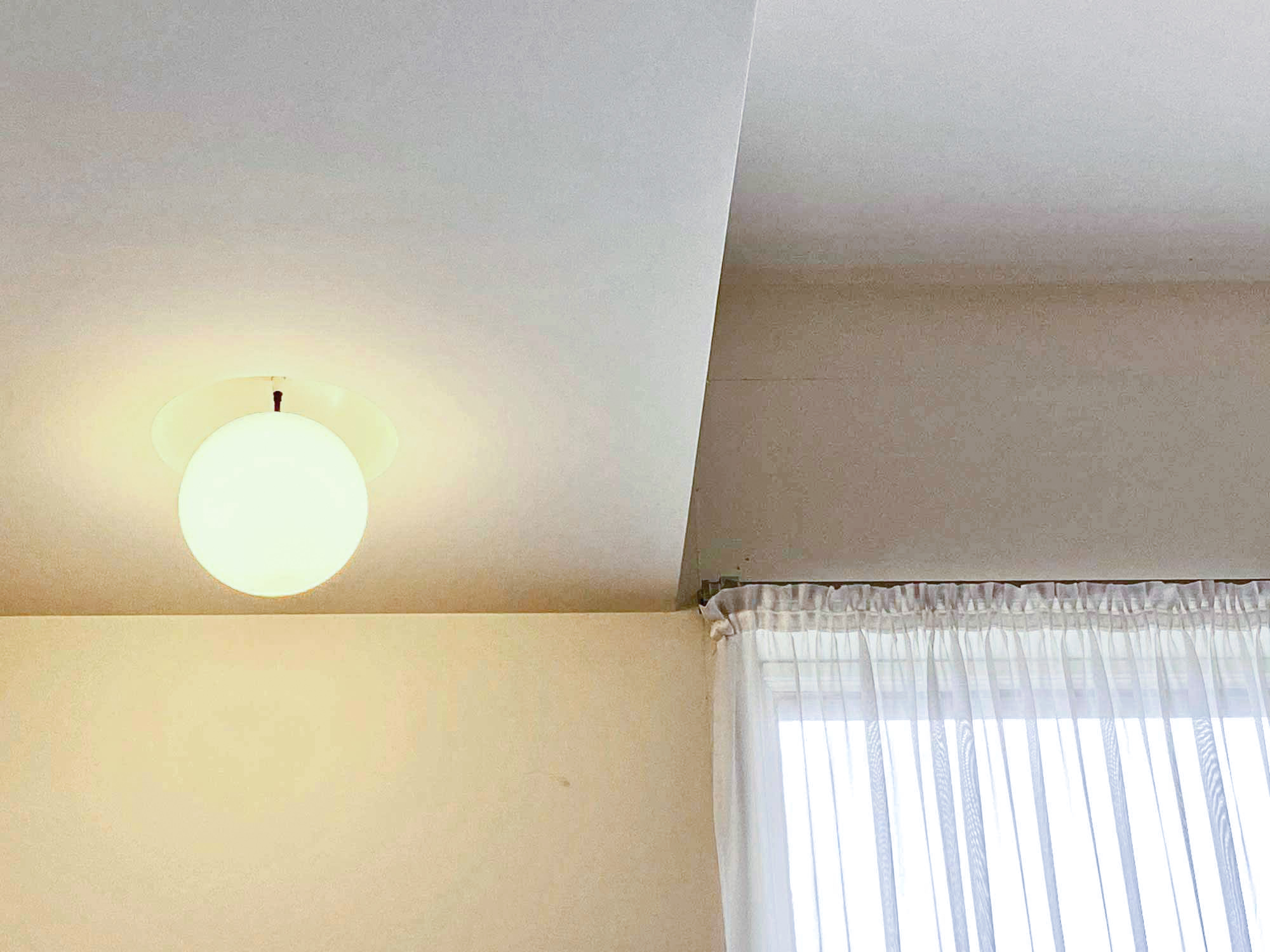
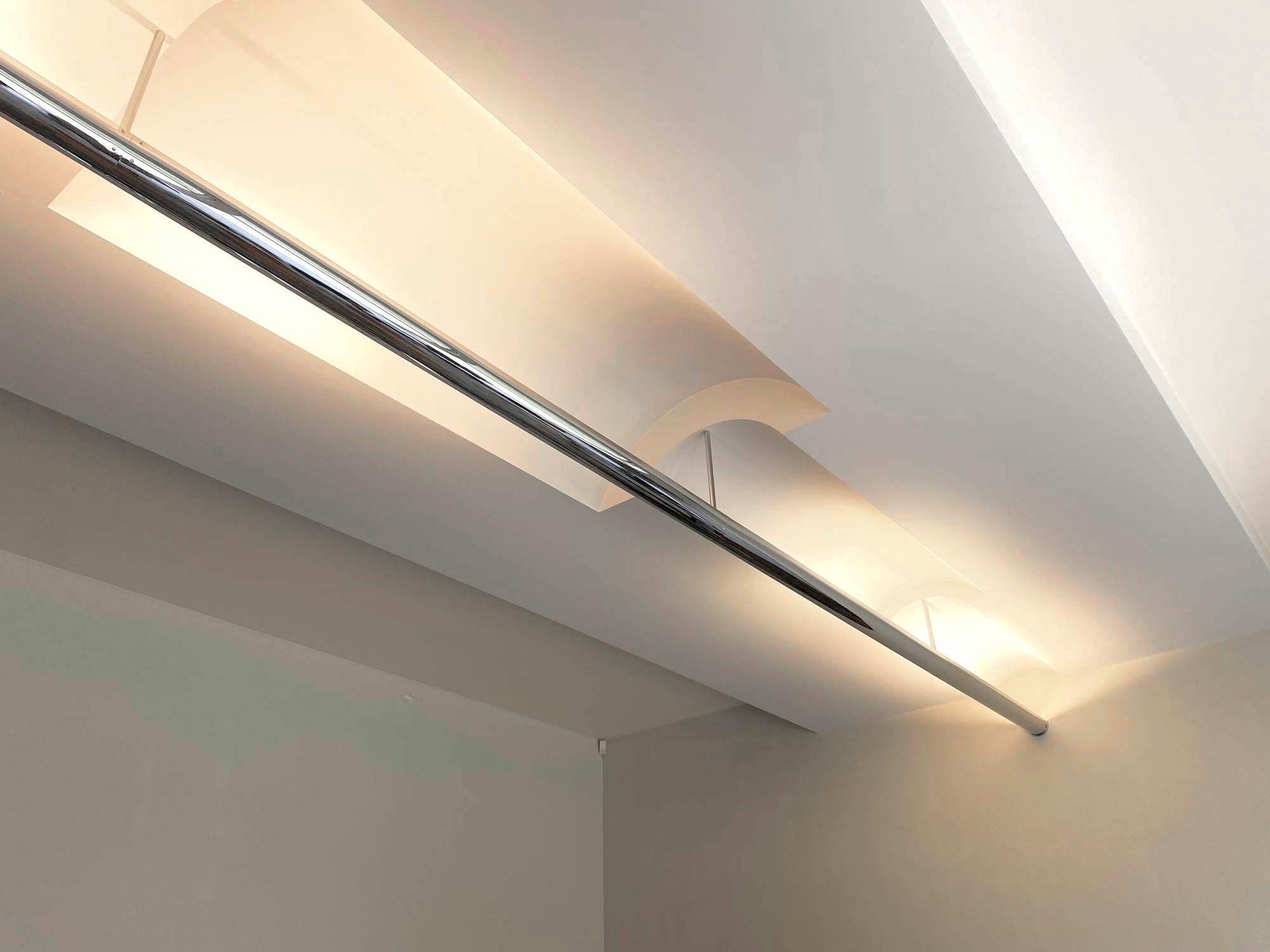
The house has indirect lighting throughout, which was carefully planned in collaboration with engineer and lighting designer André Salomon.
Most of the rooms have integrated lighting, which direct light towards the ceiling, in a way that perfectly mimics natural light.
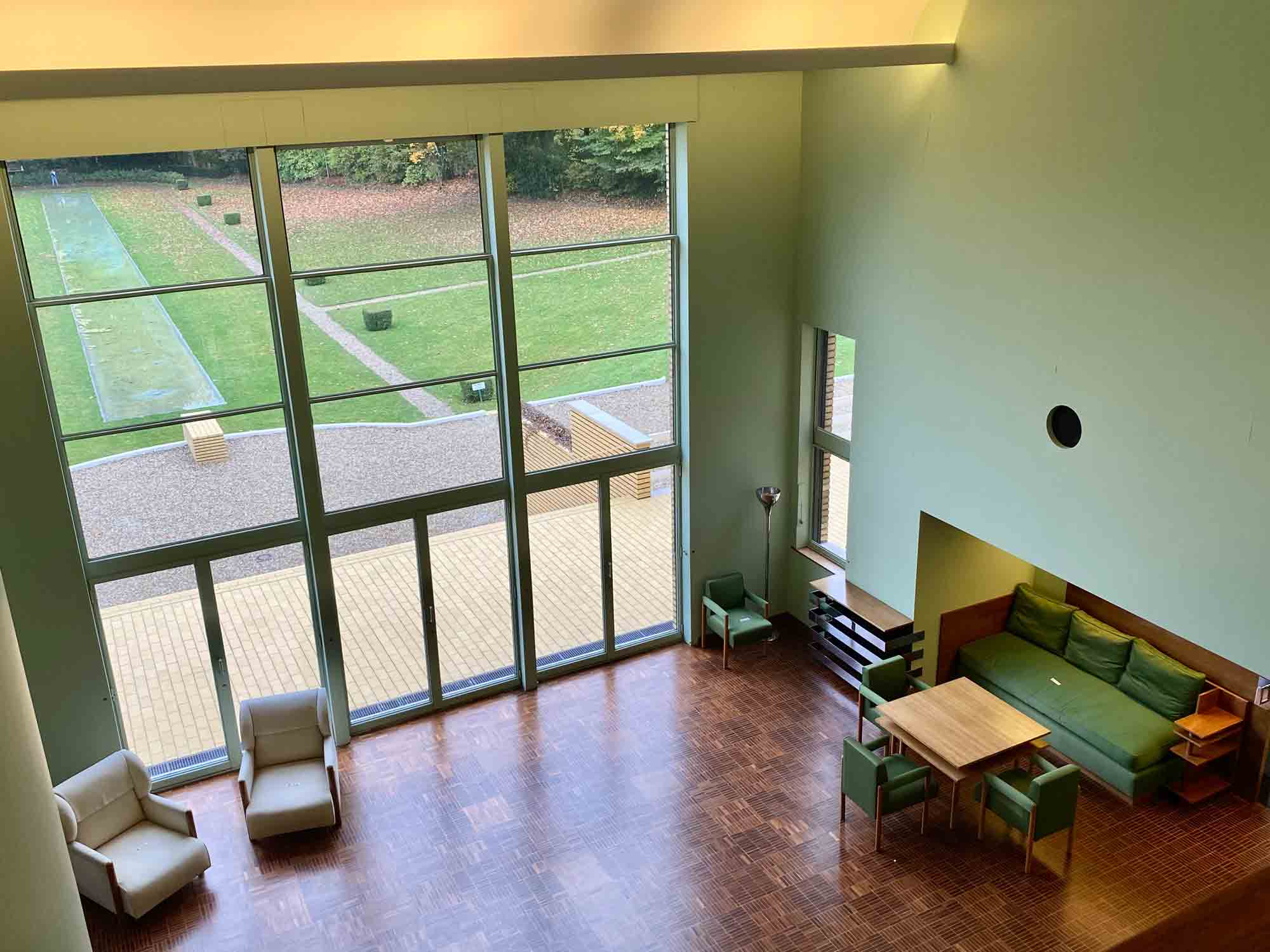
Mallet-Stevens chose Modernist materials for the interiors : reinforced concrete, metal, steel, glass, green Swedish marble for the dining room or yellow Siena marble in the hall.
The large double height living room offers a striking view of the gardens.
Green is the dominant color here, and a sliding door provides access to the parents’ dining room which is clad in green Swedish marble.
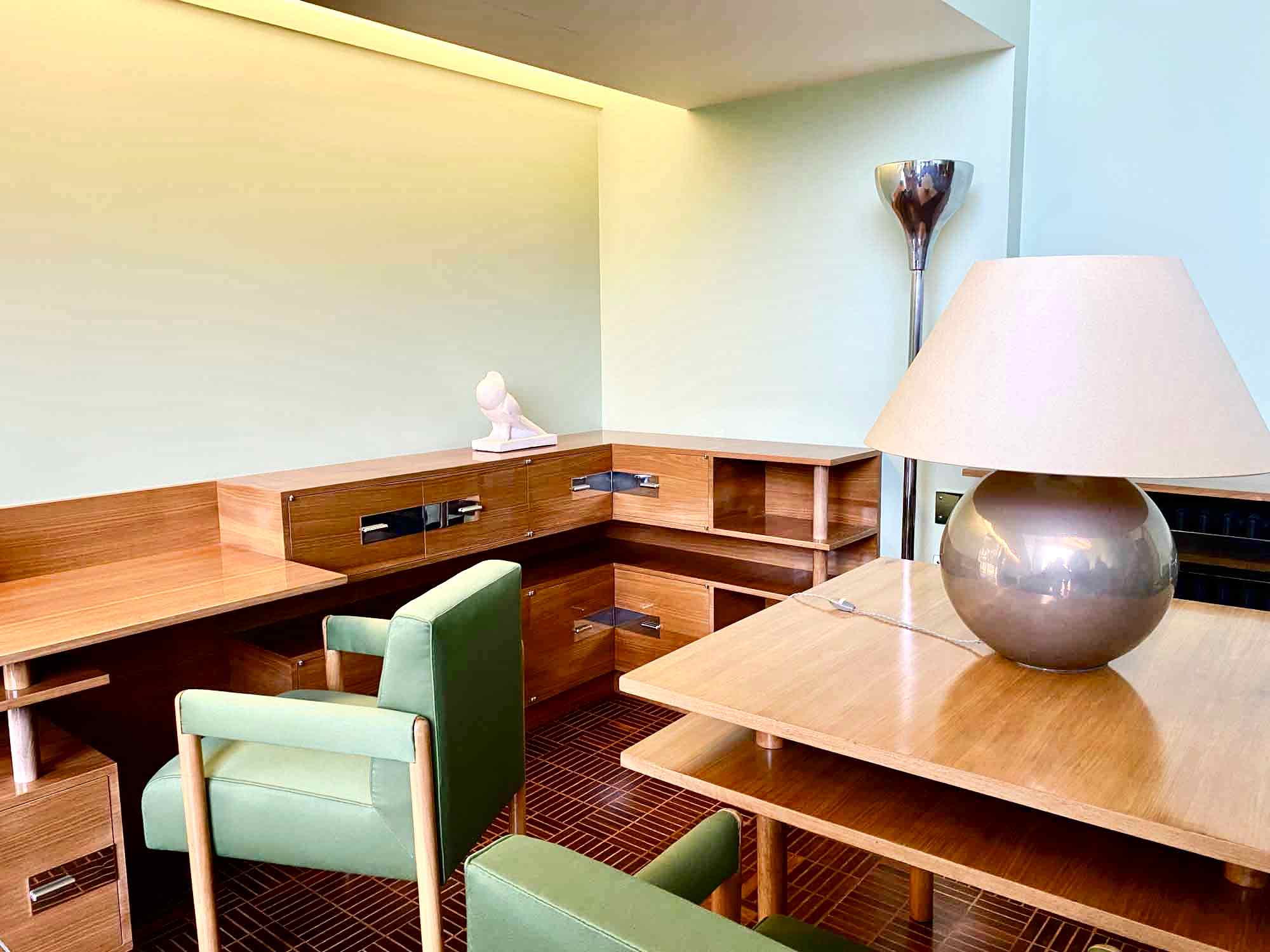

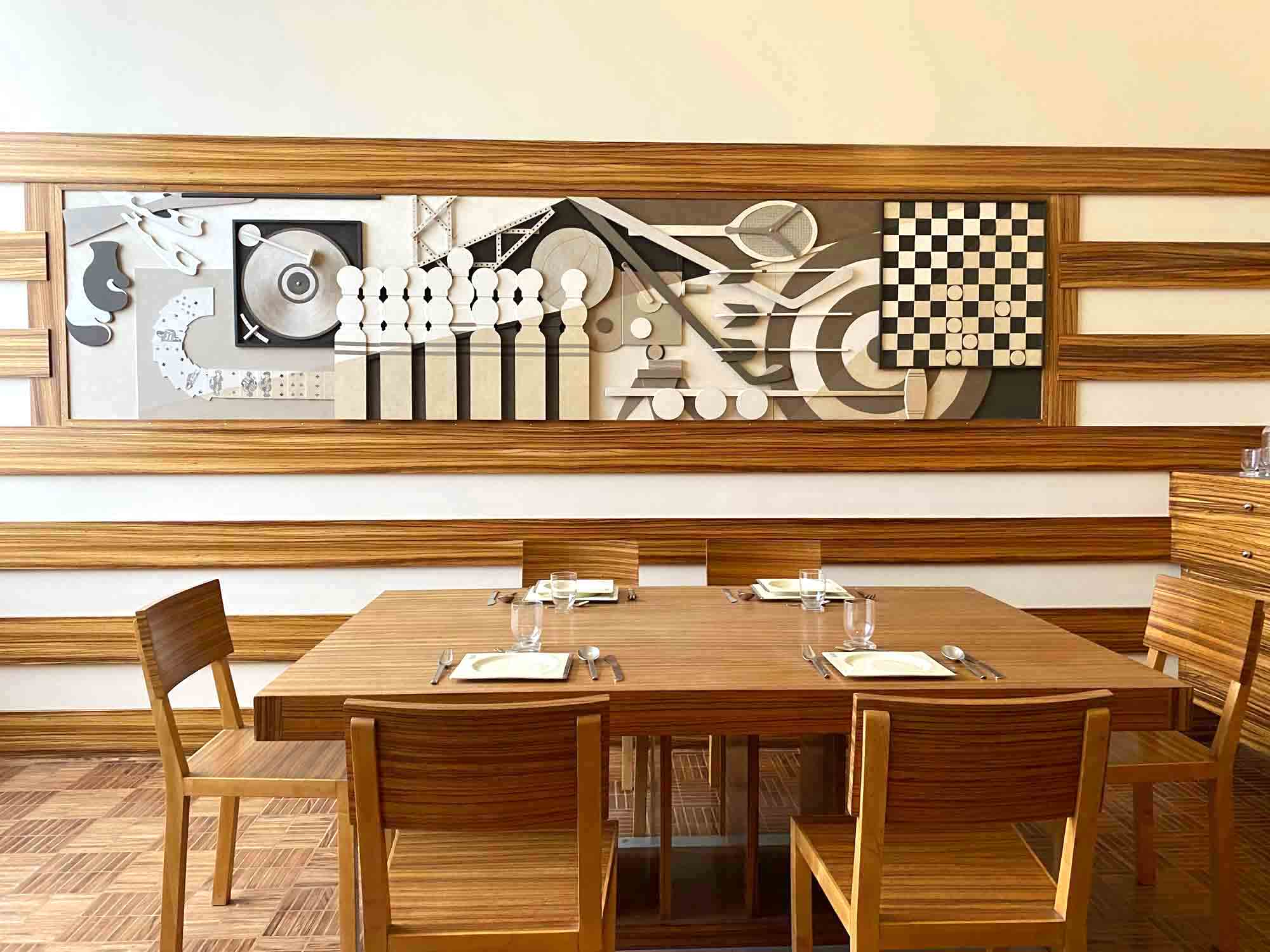
The children’s dining room featured a decorative bas-relief by sculptors Jan and Joël Martel representing games and leisure activities: cards, darts, tennis racket, bowling, boxing, mallet and balls for polo and croquet, hockey, ice skating…
Unfortunately the original has disappeared, but it has been replaced by a painted interpretation by artist Jean Sylvain Bieth.
This room leads through to the kitchen which was designed to be practical and easy to clean, with its tiled walls and metal furniture.

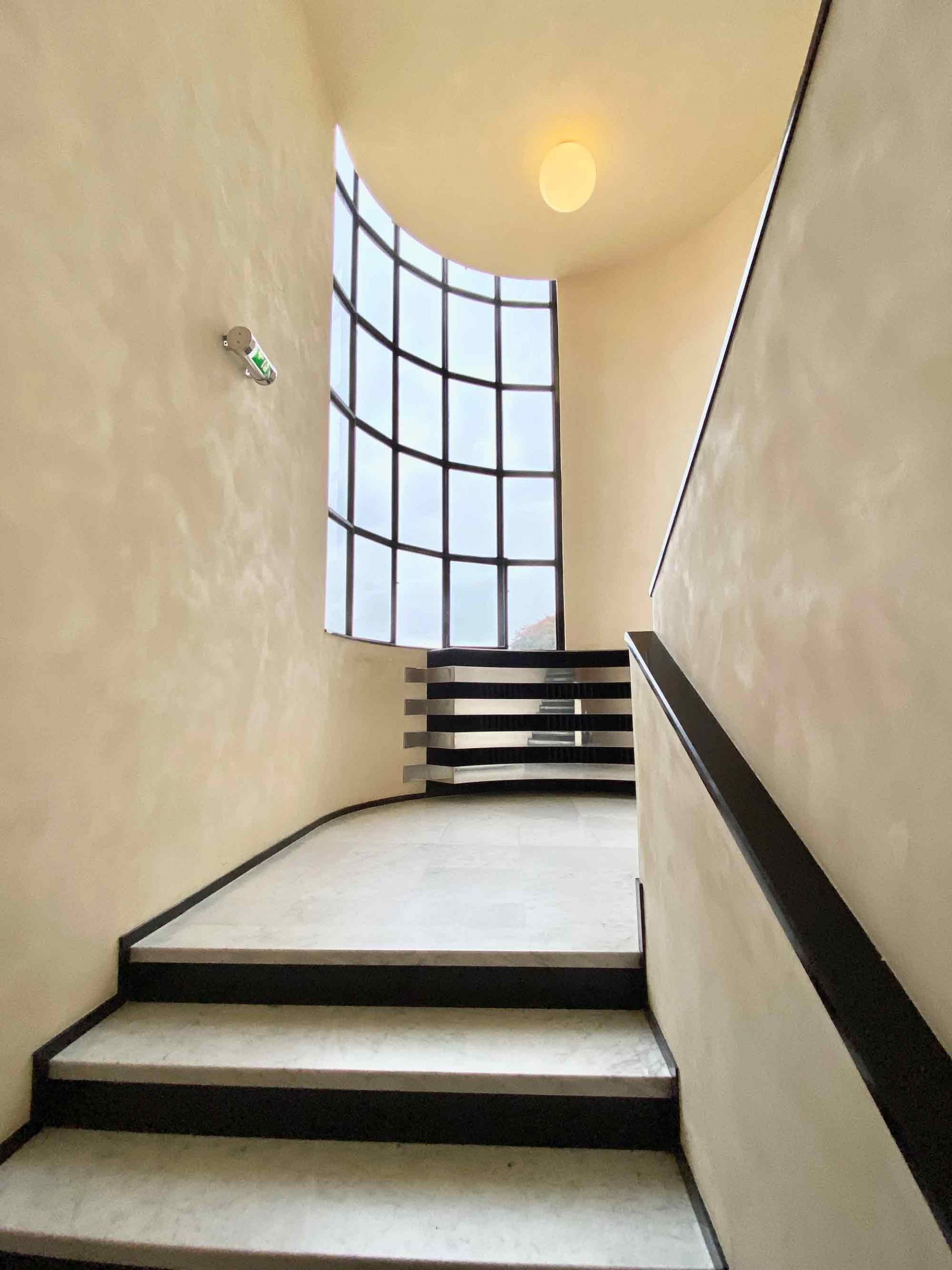
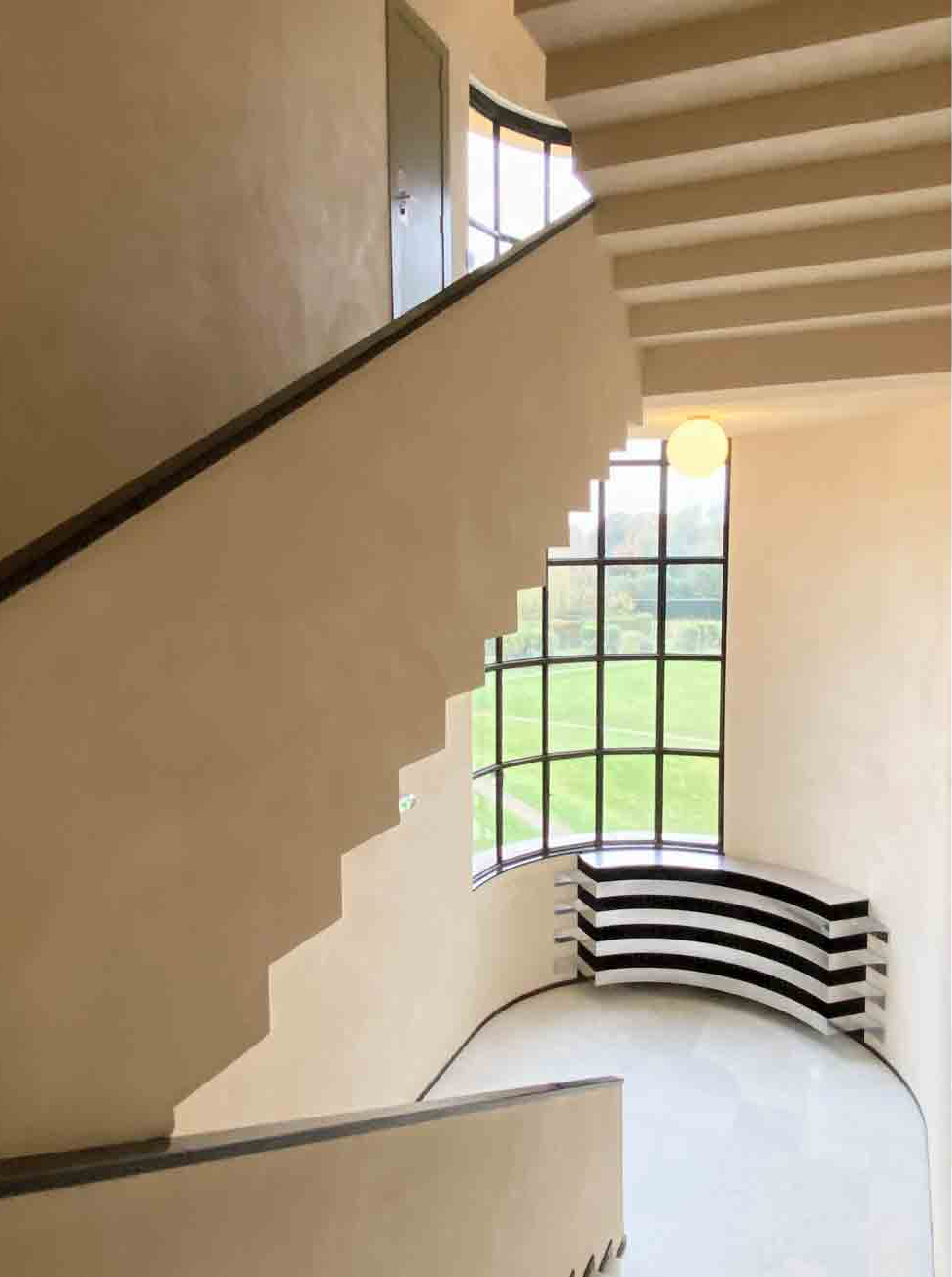
The main staircase – in black and white marble – leads to the first floor. Upstairs, the west wing is devoted to the children and the housekeeper and the east wing to the master bedroom and its bathroom.
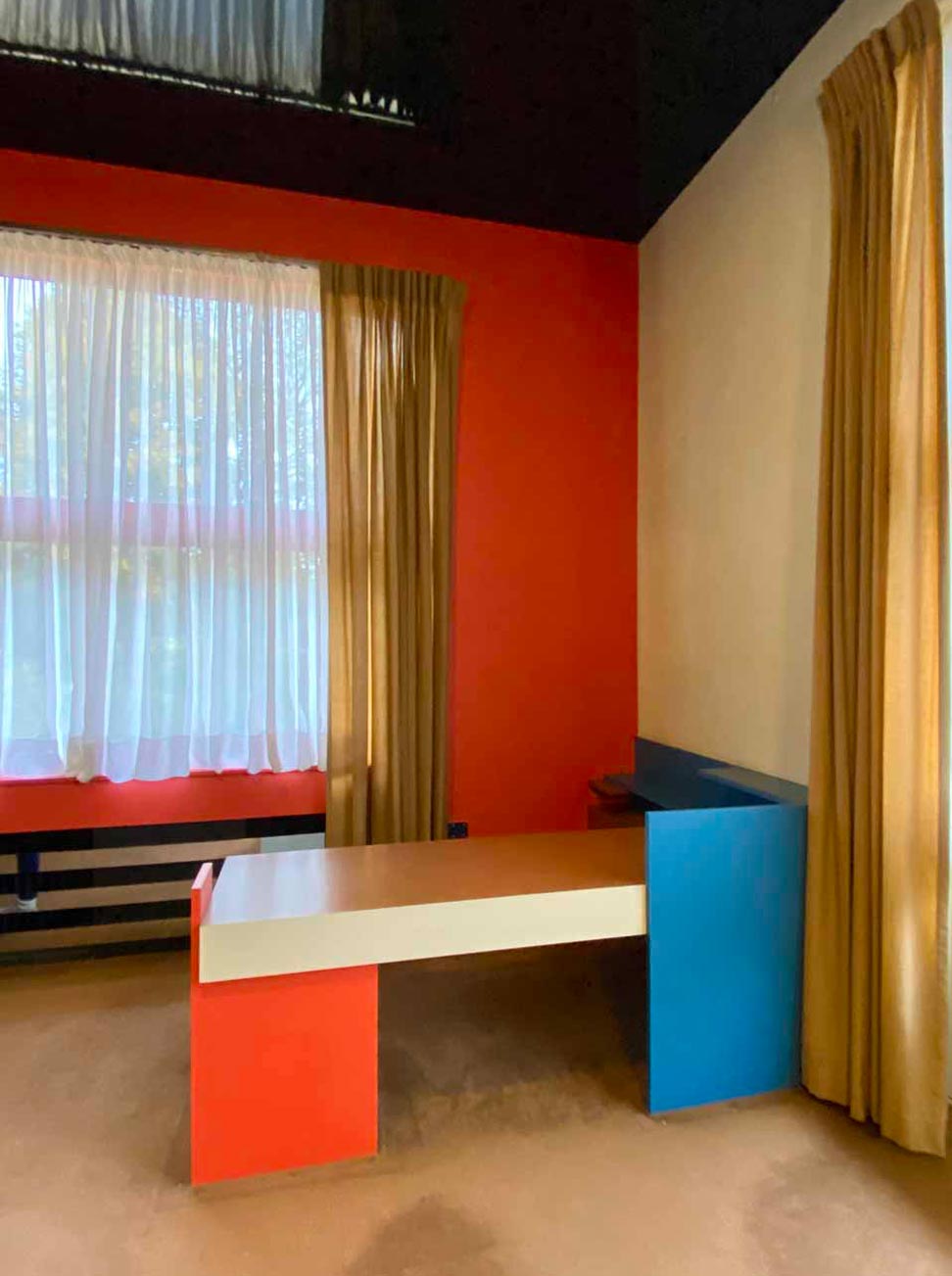
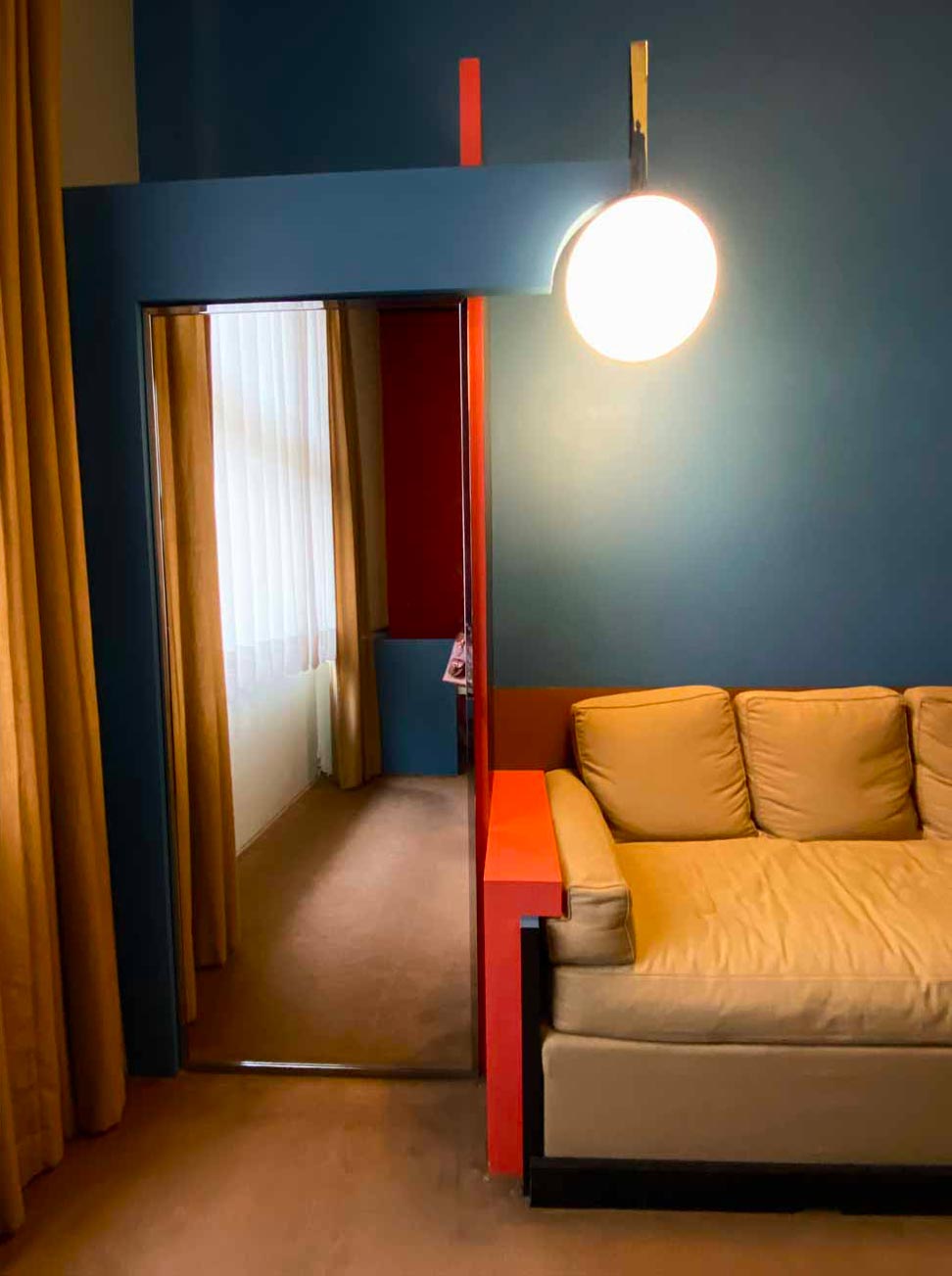
The brightly coloured boys bedroom pays homage to the Dutch art movement De Stijl.
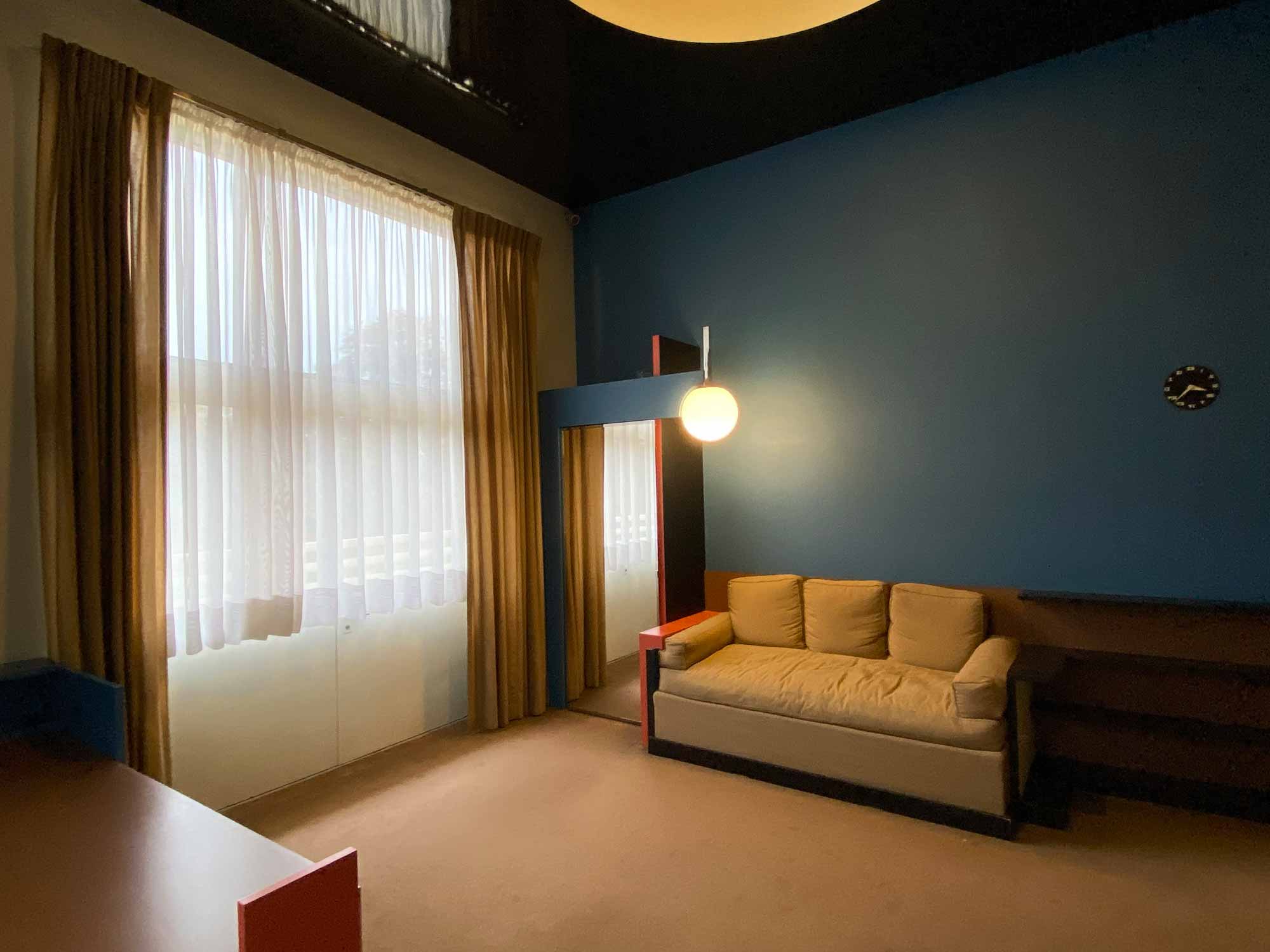
The parental bathroom – 60 m2 – has a dressing room with a black and white carpet. Very modern for its time, it includes a barometer, a water jet shower and bathroom scales built into the wall.
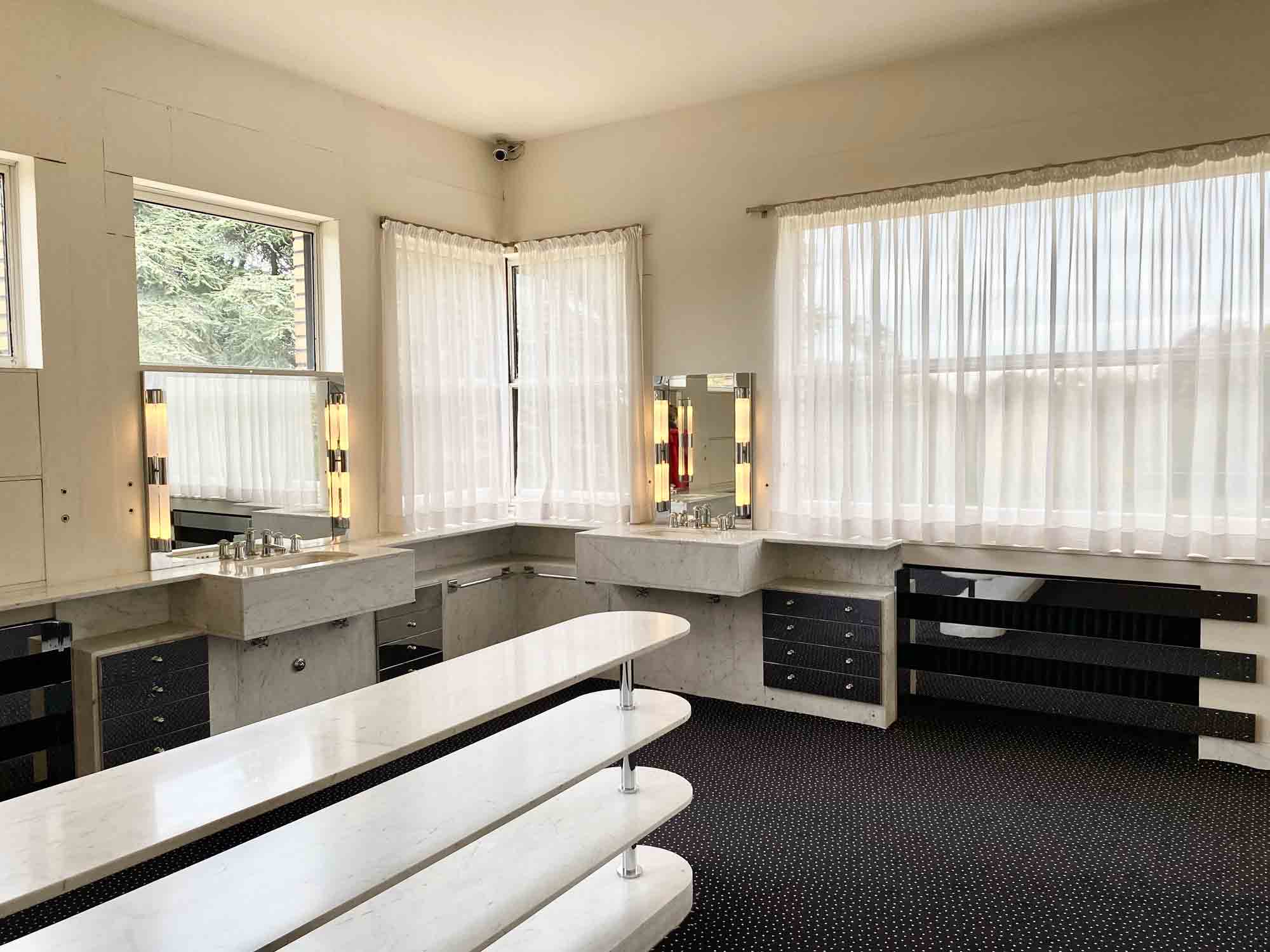
Lucie Cavrois’ boudoir is very colourful with blue walls and carpet, and sycamore furniture in almost yellow hues.

On the second floor is the playroom and the children’s study room, which opens onto a roof terrace. This terrace, with its pergola and dumbwaiter connected to the kitchen, was also used as a summer dining room.
The Cavrois family lived in the house until 1940, when the outbreak of the second world war forced them to take refuge in Normandy. The house was then occupied by German soldiers and transformed into a military barracks.
The family returned in 1947, and the interior was slightly re-designed, to accommodate separate apartments for the families of Paul Cavrois’ sons.
The villa was later purchased and renovated by the French Centre Des Monuments Nationaux. It opened to the public in 2015.
Shop the look

The Villa Cavrois
The Villa Cavrois was built for the industrialist Paul Cavrois (who made his fortune in the textile industry). The house, located in Croix, northern France, was designed by Robert Mallet-Stevens, to whom Paul Cavrois gave carte blanche. Mallet-Stevens designed both the building – inaugurated in 1932 after 3 years of work – the interiors and the gardens.
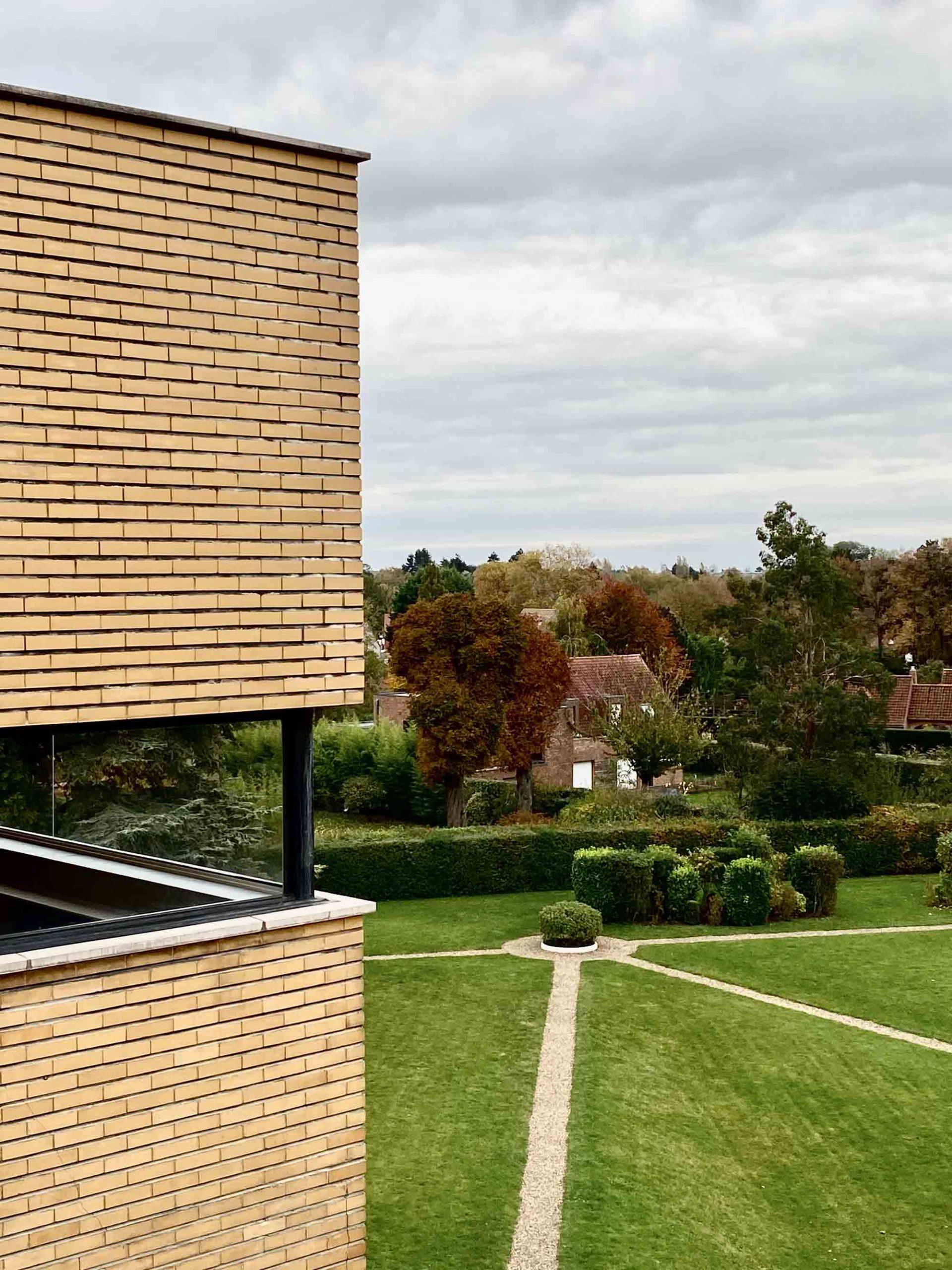
The exterior is clad in brick, a material widely used in the region. Mallet-Stevens used 26 different molds, to have bricks made to his exact dimensions and to ensure that not one single brick was cut.
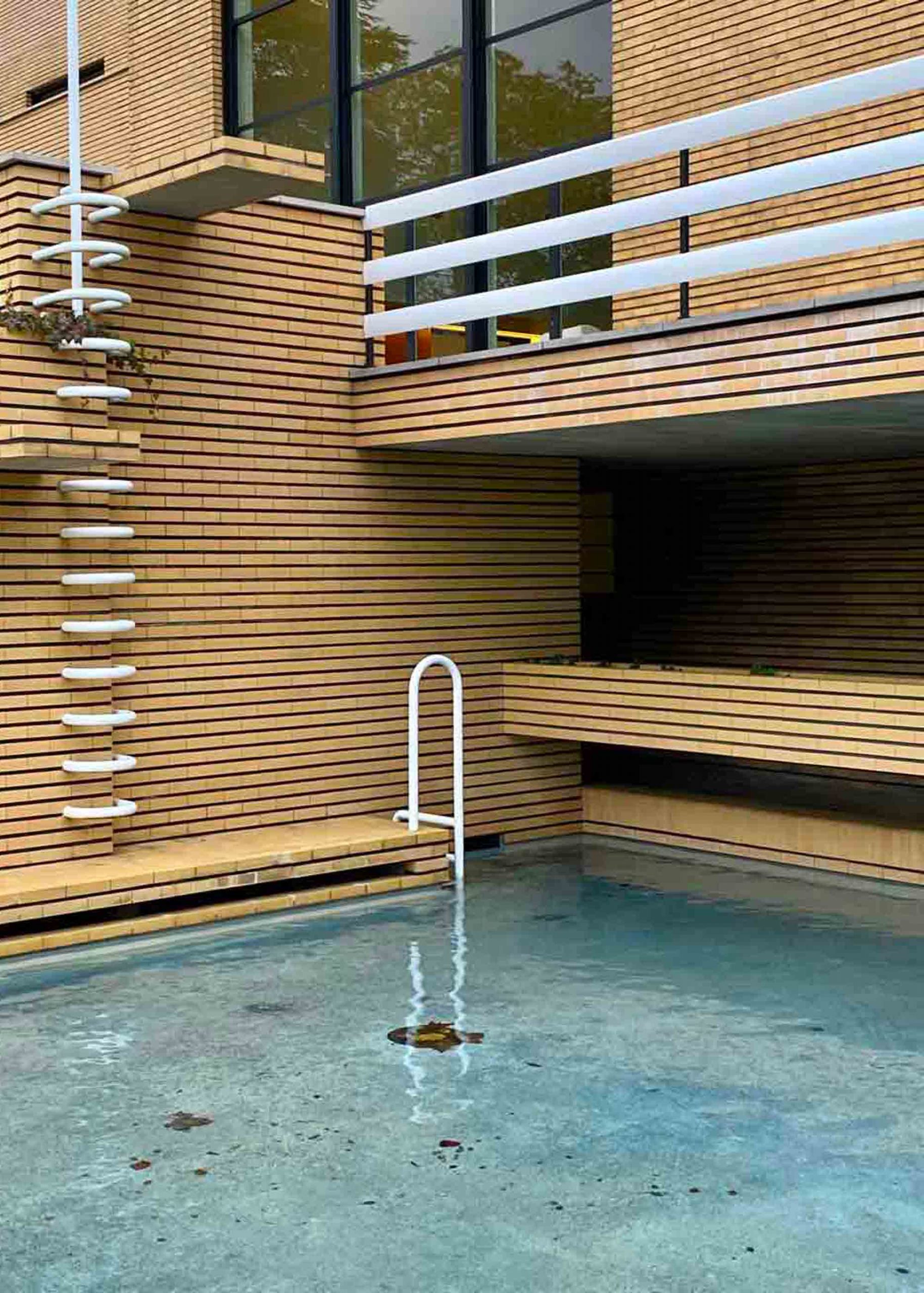
Although the style of the villa is extremely modern with its yellow brick cladding on the exterior, clean lines and large glass surfaces, the plan of the villa corresponds to that of the traditional French chateau, with its entrance and large hall in the centre, serving two symmetrical wings: one the one side that of the parents and on the other, that of the children and the servants.
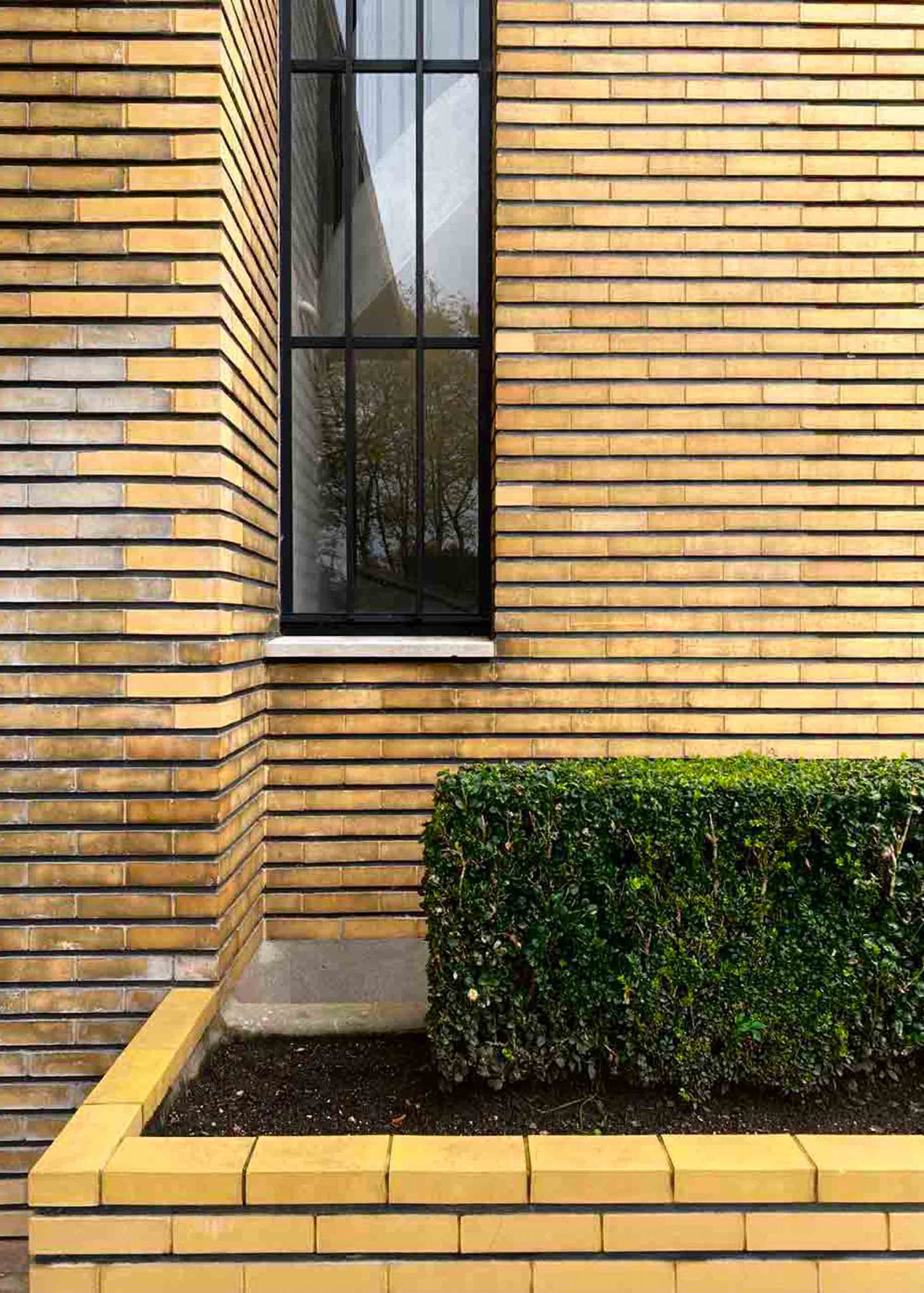
The Villa Cavrois – 60m long, featuring 1,840m2 of living space – was designed to impress, and to showcase a new way of life privileging light, space, comfort and healthy living.

The house was equipped with hot and electricity, equipment that was relatively rare in the 1930s. There was a telephone in every room, a modern boiler room, and a wine cellar.


The house has indirect lighting throughout, which was carefully planned in collaboration with engineer and lighting designer André Salomon.
Most of the rooms have integrated lighting, which direct light towards the ceiling, in a way that perfectly mimics natural light.

Mallet-Stevens chose Modernist materials for the interiors : reinforced concrete, metal, steel, glass, green Swedish marble for the dining room or yellow Siena marble in the hall.
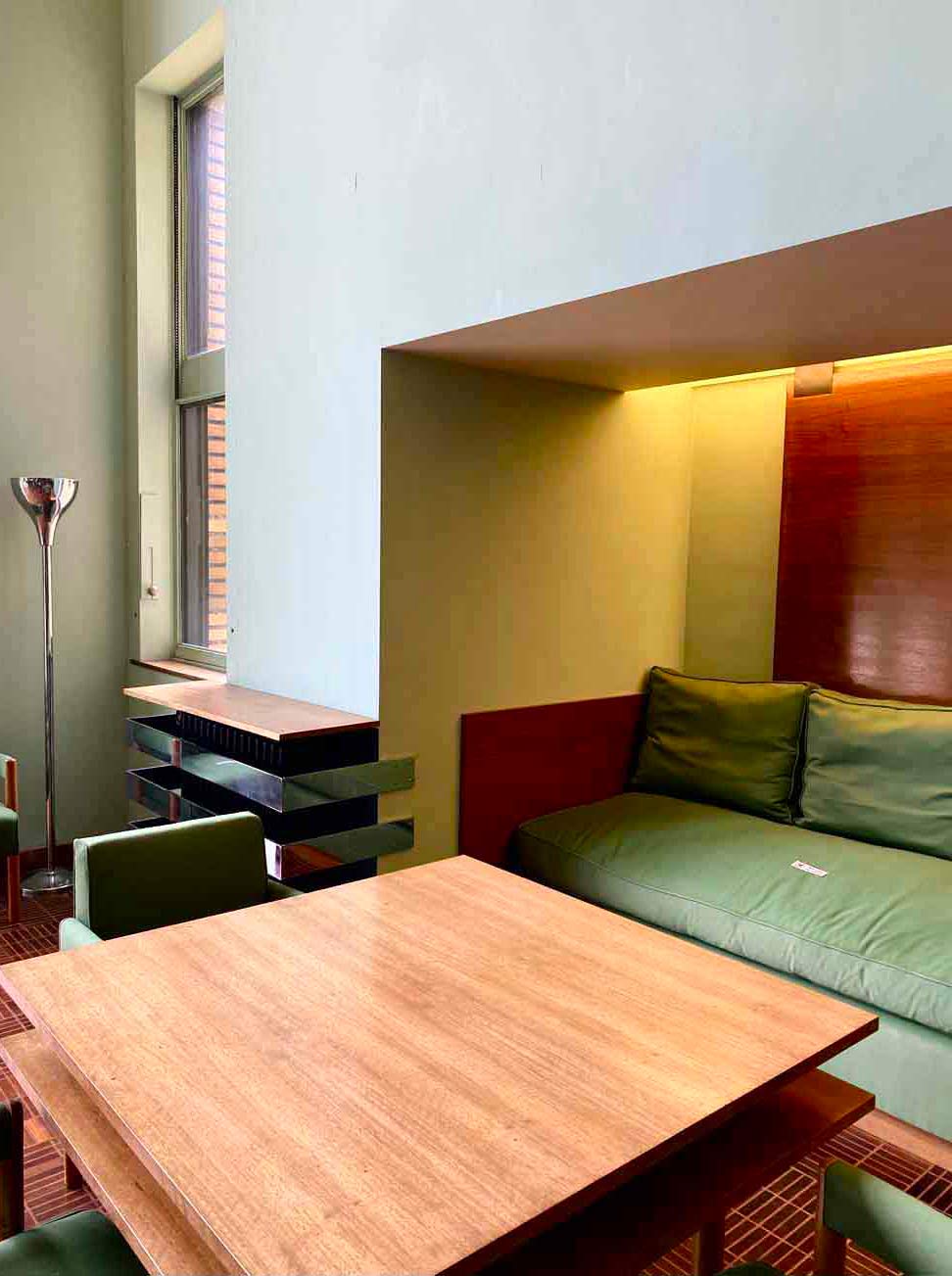
The large double height living room offers a striking view of the gardens.

Green is the dominant color here, and a sliding door provides access to the parents’ dining room which is clad in green Swedish marble.

The children’s dining room featured a decorative bas-relief by sculptors Jan and Joël Martel representing games and leisure activities: cards, darts, tennis racket, bowling, boxing, mallet and balls for polo and croquet, hockey, ice skating… Unfortunately the original has disappeared, but it has been replaced by a painted interpretation by artist Jean Sylvain Bieth.
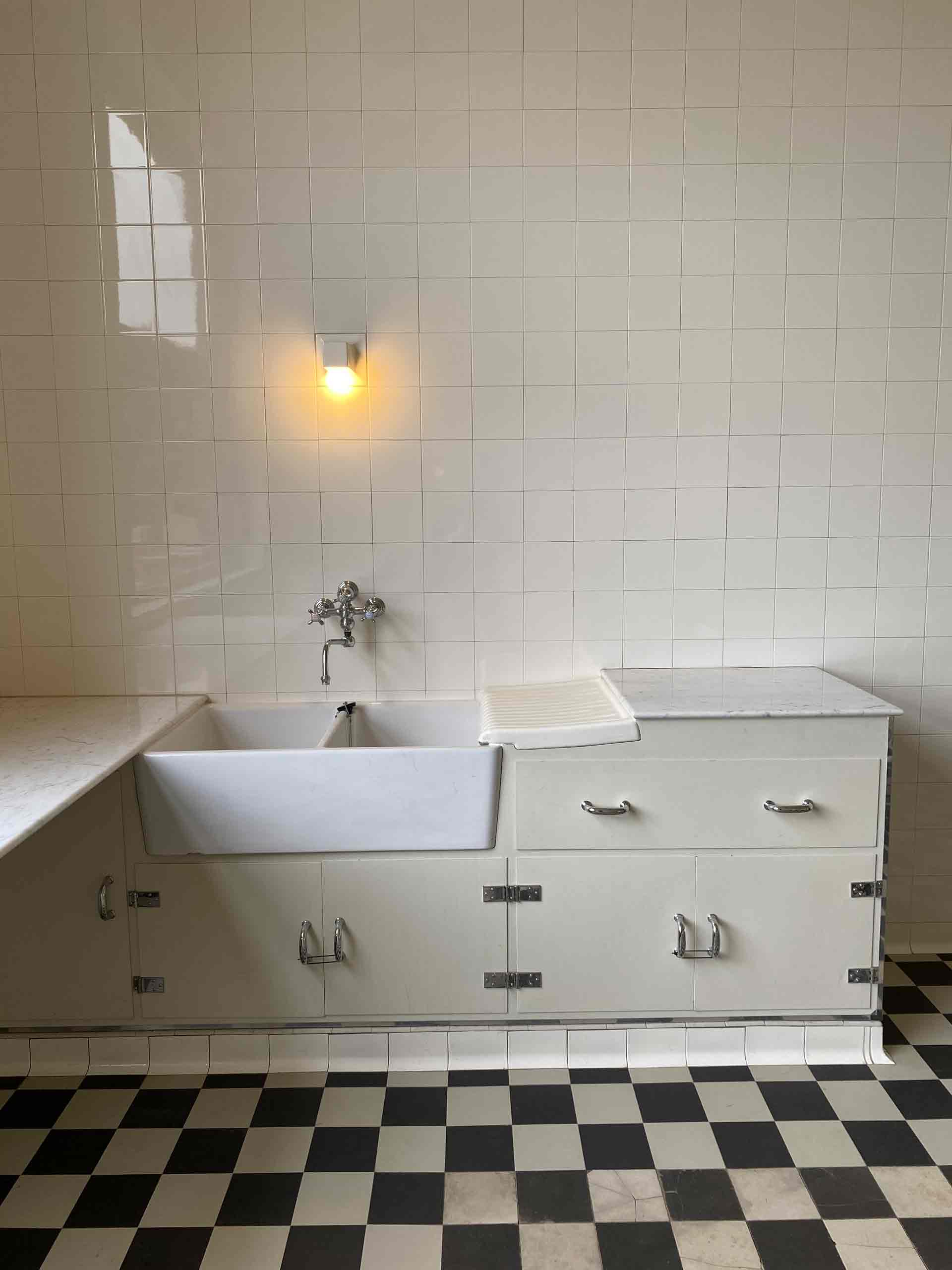
This room leads through to the kitchen which was designed to be practical and easy to clean, with its tiled walls and metal furniture.

The main staircase – in black and white marble – leads to the first floor. Upstairs, the west wing is devoted to the children and the housekeeper and the east wing to the master bedroom and its bathroom.


In the east wing is Paul Cavrois’s office, a smoking room and his sons’s two young men’s bedrooms.


The brightly coloured boys bedroom pays homage to the Dutch art movement De Stijl.

The parental bathroom – 60 m2 – has a dressing room with a black and white carpet. Very modern for its time, it includes a barometer, a water jet shower and bathroom scales built into the wall.

Lucie Cavrois’ boudoir is very colourful with blue walls and carpet, and sycamore furniture in almost yellow hues.

On the second floor is the playroom and the children’s study room, which opens onto a roof terrace. This terrace, with its pergola and dumbwaiter connected to the kitchen, was also used as a summer dining room.
The Cavrois family lived in the house until 1940, when the outbreak of the second world war forced them to take refuge in Normandy. The house was then occupied by German soldiers and transformed into a military barracks.
The family returned in 1947, and the interior was slightly re-designed, to accommodate separate apartments for the families of Paul Cavrois’ sons.
The villa was later purchased and renovated by the French Centre Des Monuments Nationaux. It opened to the public in 2015.
Shop the look



